The 7800 Mod Mess Mixup Fixup - pt. 5
Well, this blog entry just about ended very differently. ![]() But it's all-good now.
But it's all-good now.
So close to the finish line... just a couple more things to do after this. But first, here's where we're at now.
When we last left this poor, abused 7800, I was about to install a UAV mod, using one of -^CrossBow^-'s 7800 UAV Mount Boards.
First - I need to install the wires (or a header, but in this case, wires). I soldered the first one, then held each successive wire in place with some little copper clips I picked up somewhere ages ago. Probably Radio Shack. Anyway, they're super-handy.
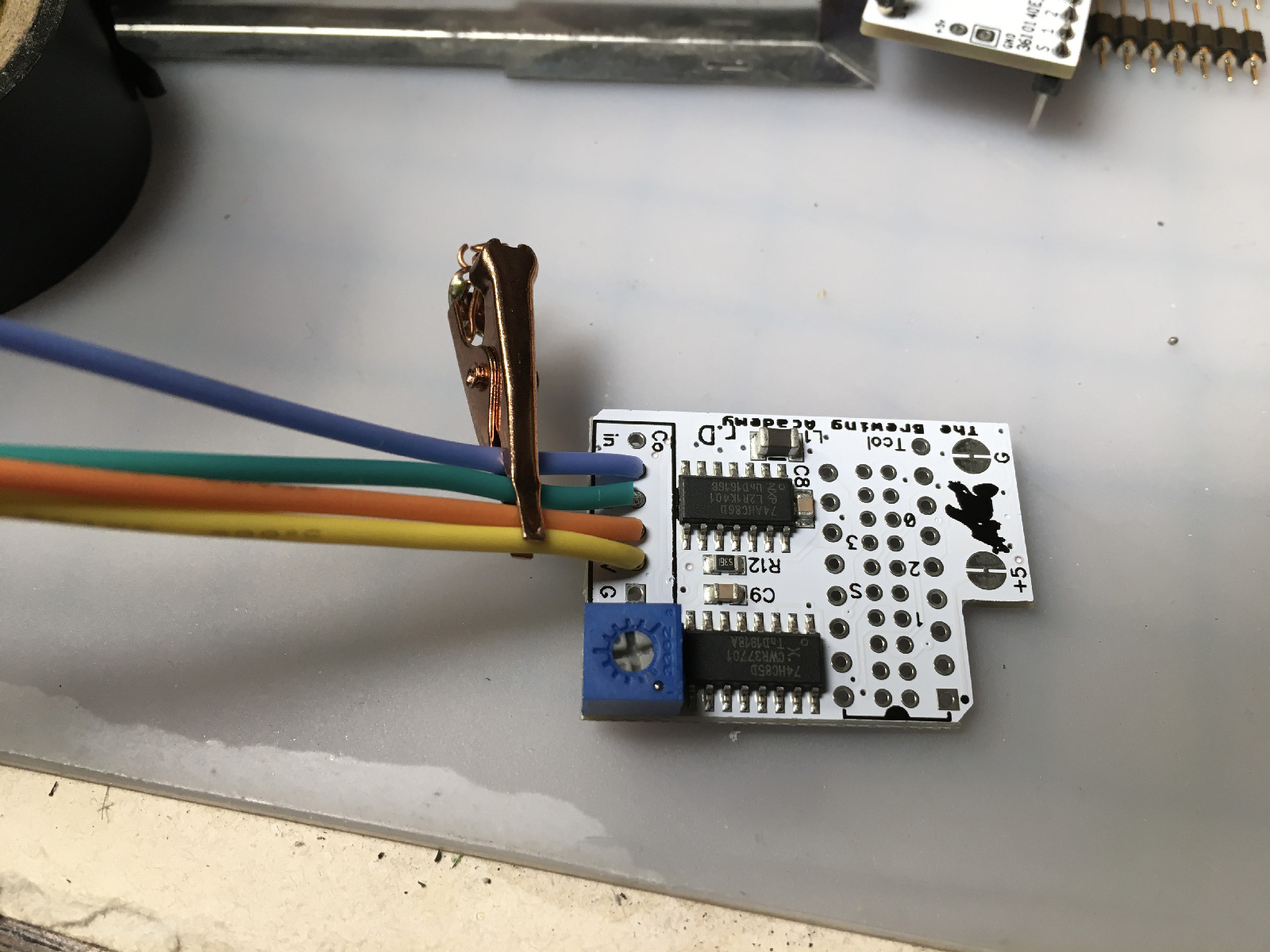
I also recently picked up a bigger magnifier, because age.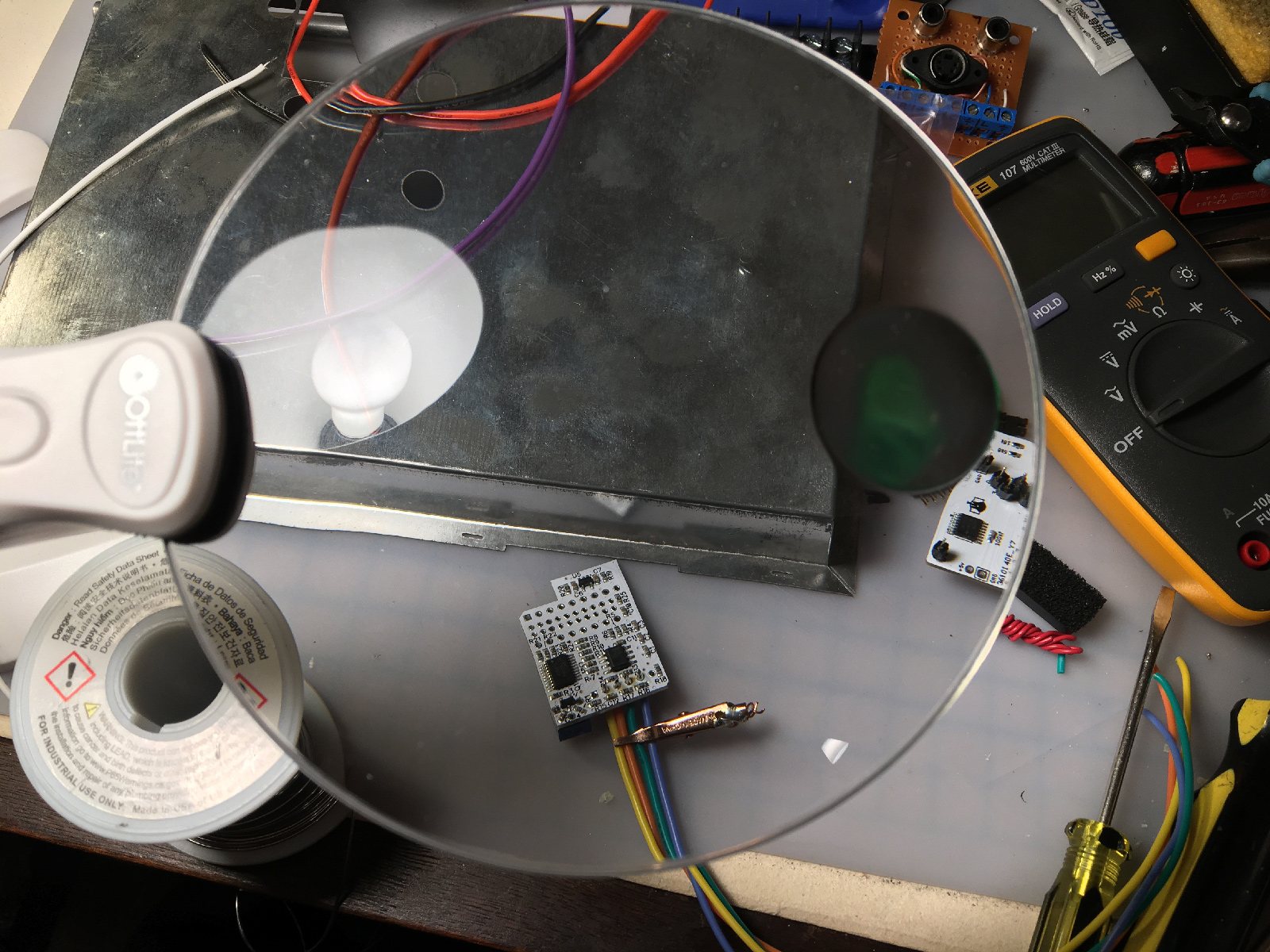
Here they are, all soldered sort-of neatly in place. Note to self: next time you install one of these, switch out your soldering iron tip for a smaller one.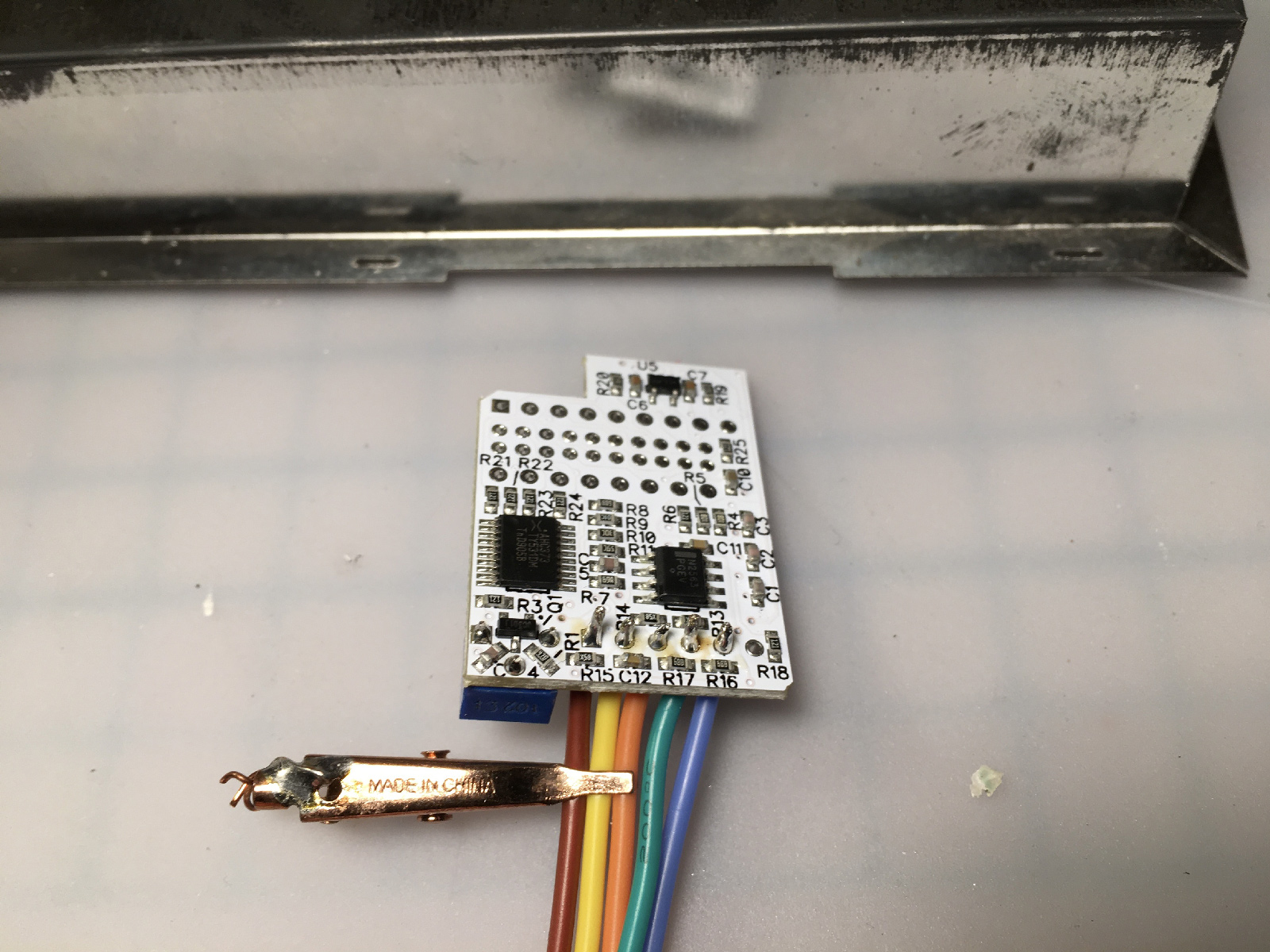
In case you're wondering what each wire color is, here's a diagram I've made so I can be consistent when installing these:
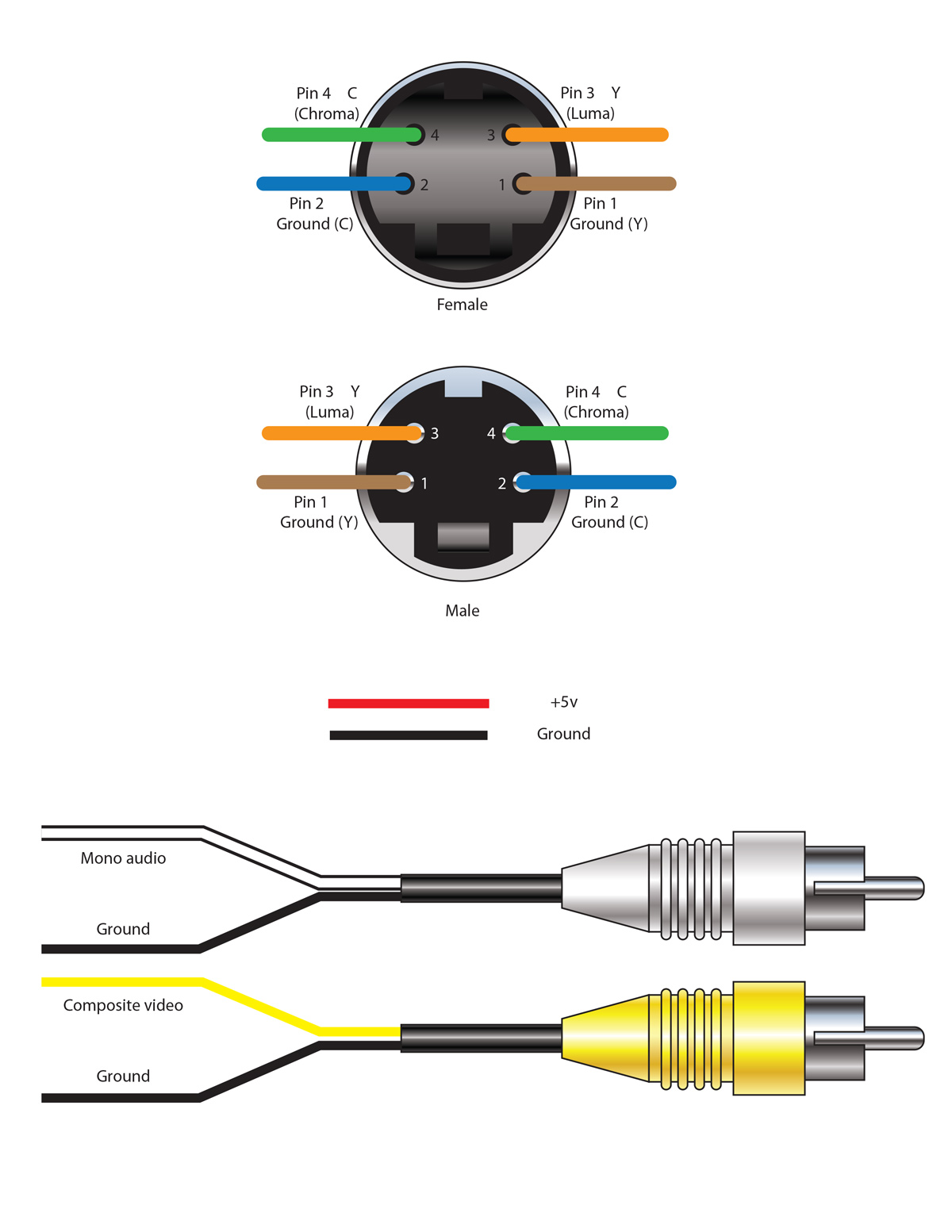
Next - I have to add a few wires to the Mount/Chroma Fix/Audio Circuit board: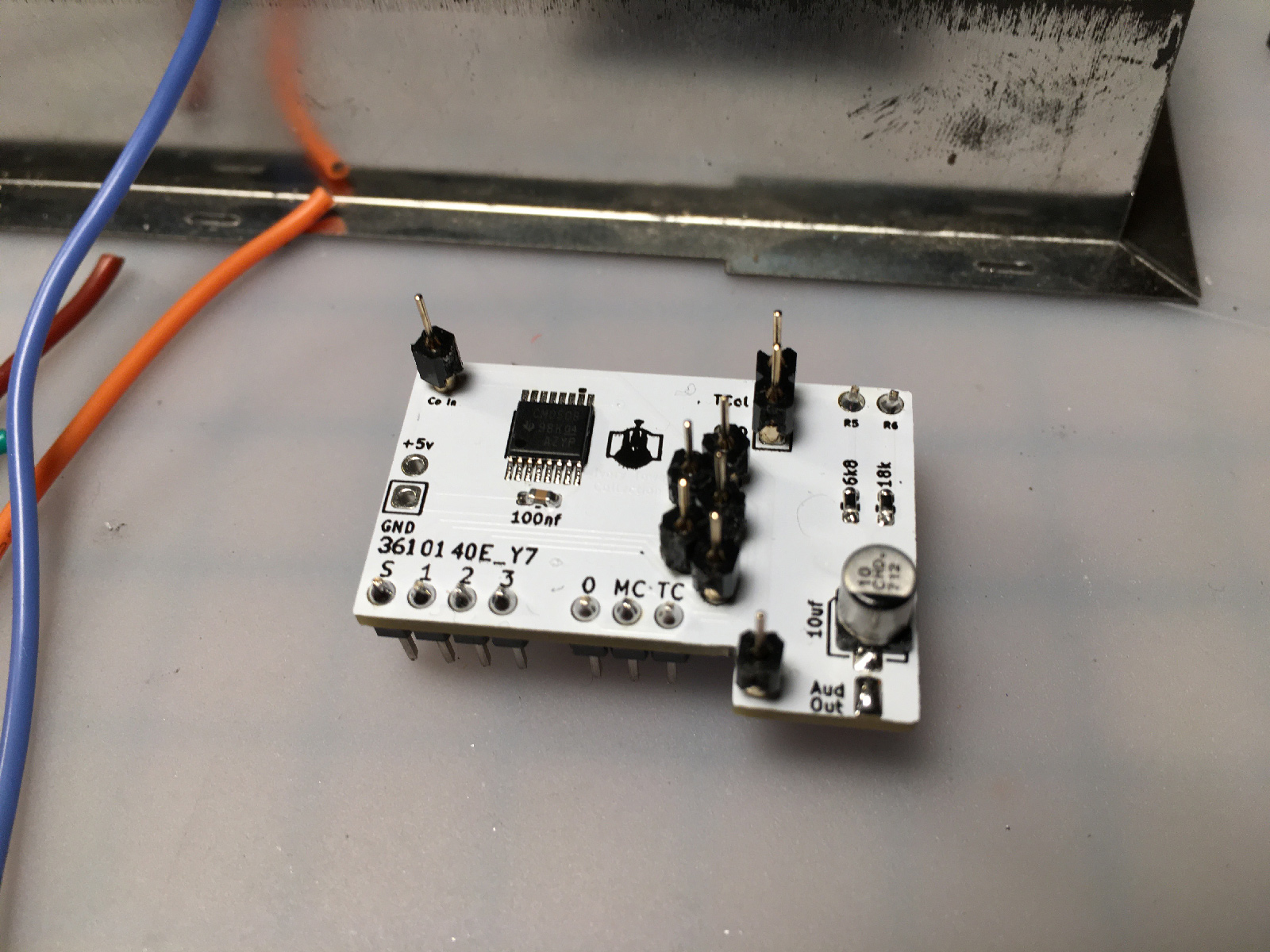
Time to bust out the Radio Shack "Helping Hands" I bought eons ago. The electrical tape keeps the alligator clip from marring things: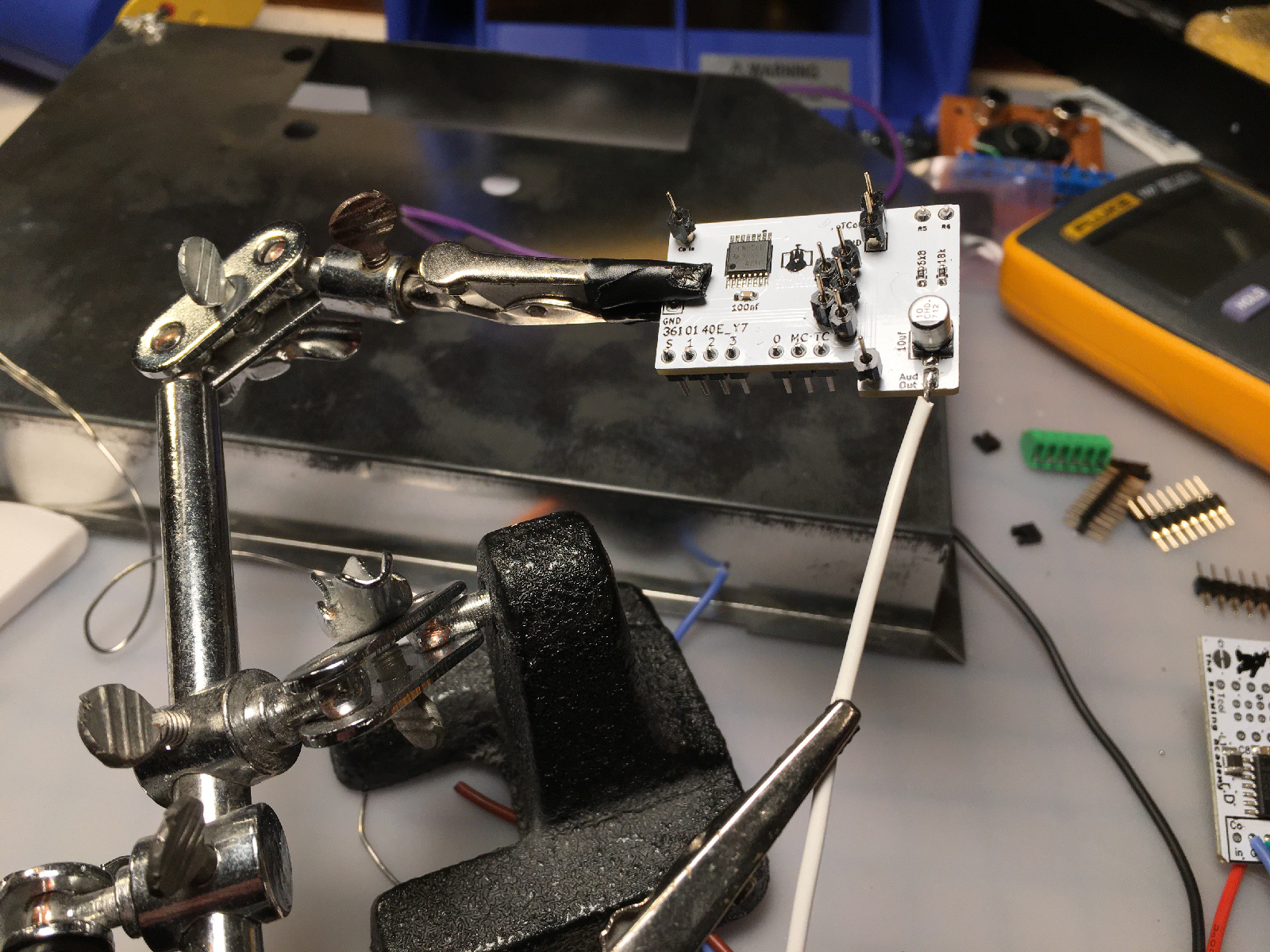
This is a really tiny pad... but I was able to make a good connection. (As a side note - if I were designing mods/boards and such, I'd make the pads bigger, and space the vias further apart, so people like me who are a bit ham-fisted with soldering irons have a little easier time with them).
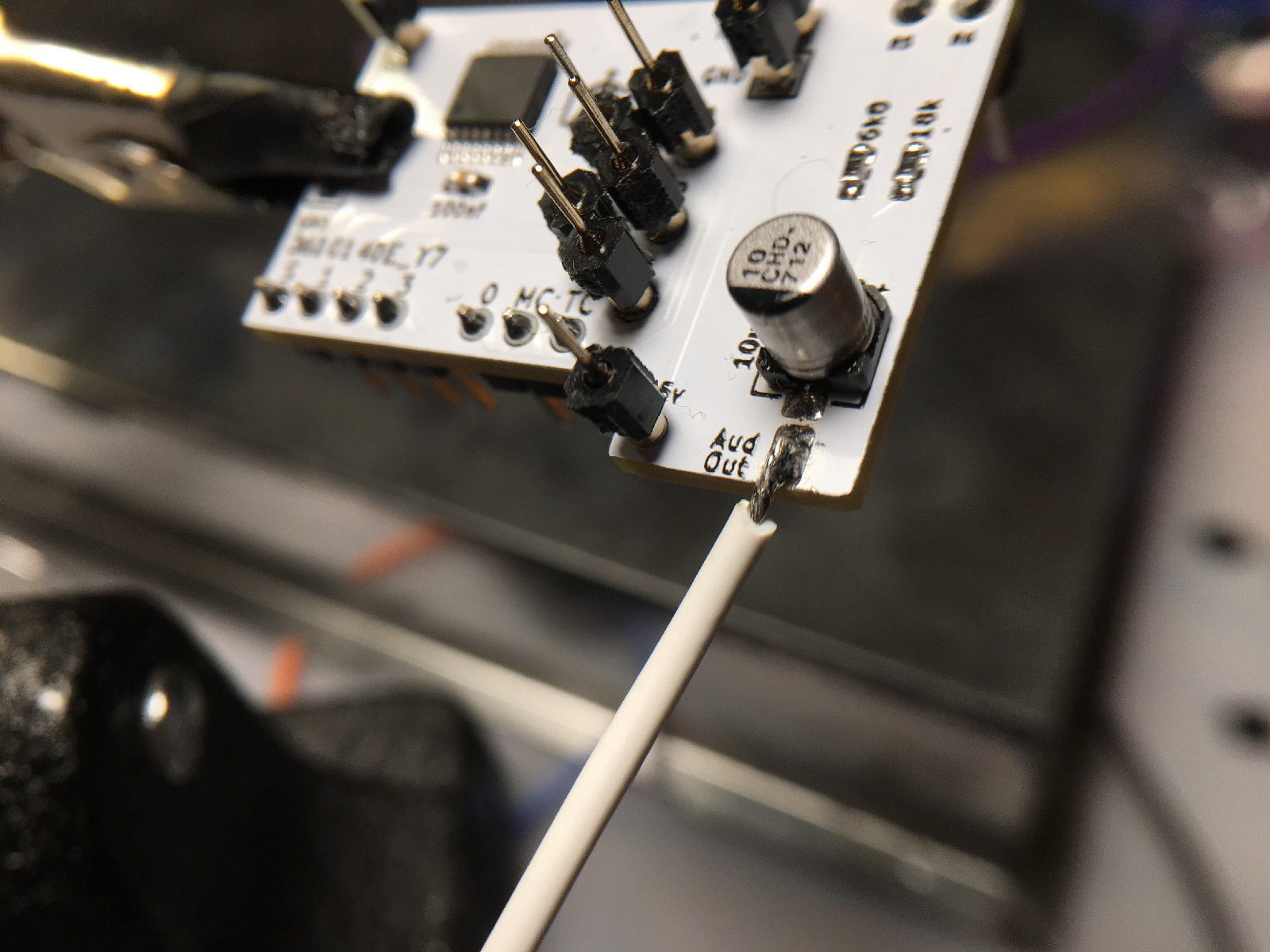
And the power wires are in place (they can attach to either board - nice feature there, Jesse!) Everything is all wired up!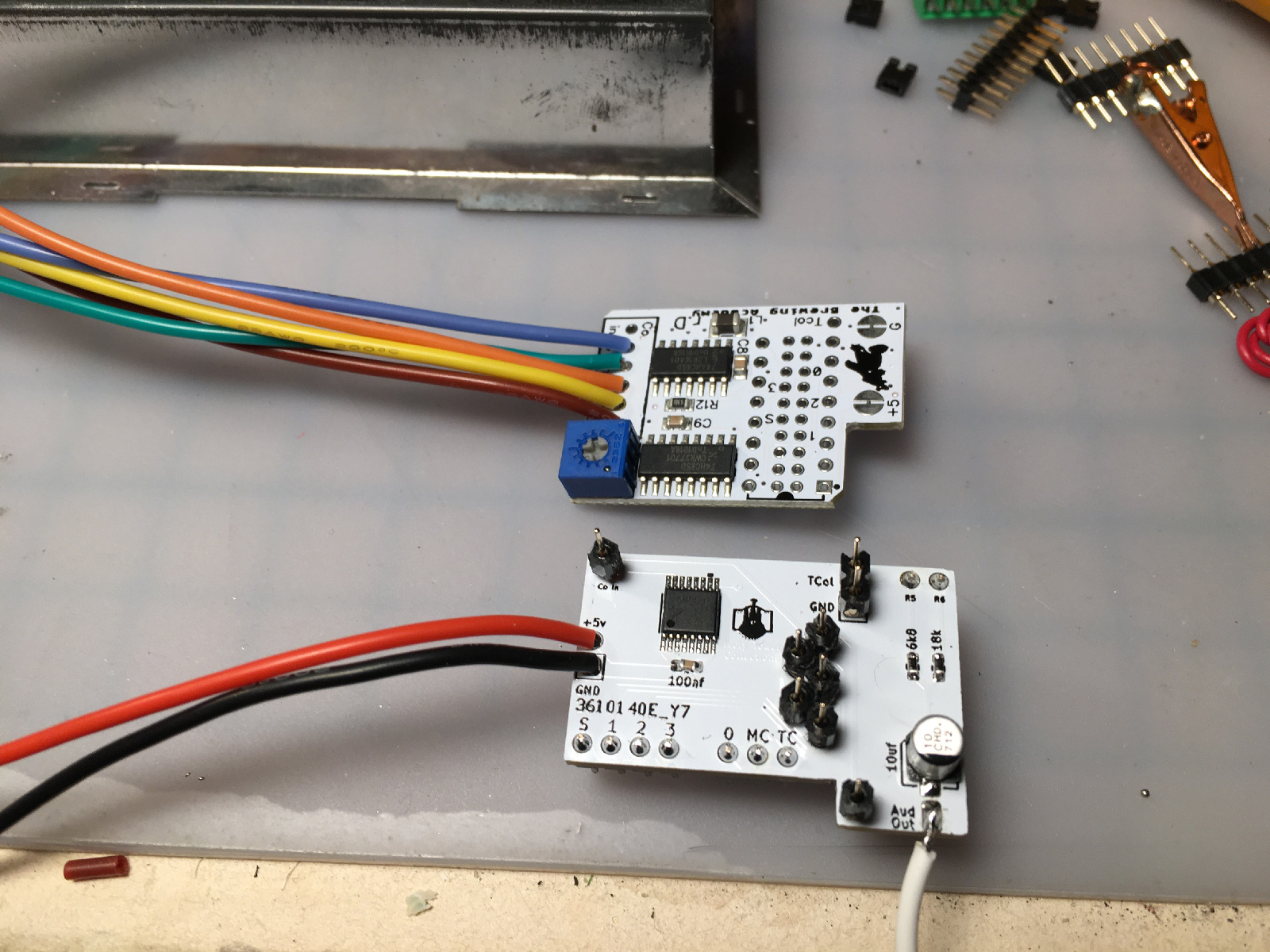
Now at this point, I had a choice to make. The Mount board is designed to sit alongside the resistor legs, and be soldered to them. Alternately, Jesse suggested I could desolder those resistors (since they're for RF, and RF is long gone from this 7800), and just install the mod directly where they used to be using their vias. While that had some appeal, I decided I wanted to leave as much of the 7800 intact, just in case someone, someday wanted to try to put an RF modulator back. Plus, I wanted the practice for my own 7800, and the RF is definitely staying intact there.
One potential downside to soldering the Mount board to the resistors is that Jesse said it would be a bear to remove. Desoldering those connections would be a pain - but I think you could instead just desolder all of the resistors from the board, and pull the entire thing out as a unit. Then you'd have pretty easy access to remove the resistors, and could reinstall them later.
Anyway, in order to solder onto the resistor legs, I needed to reinstall a leg that had been unceremoniously chopped off by the previous modder. So I did that: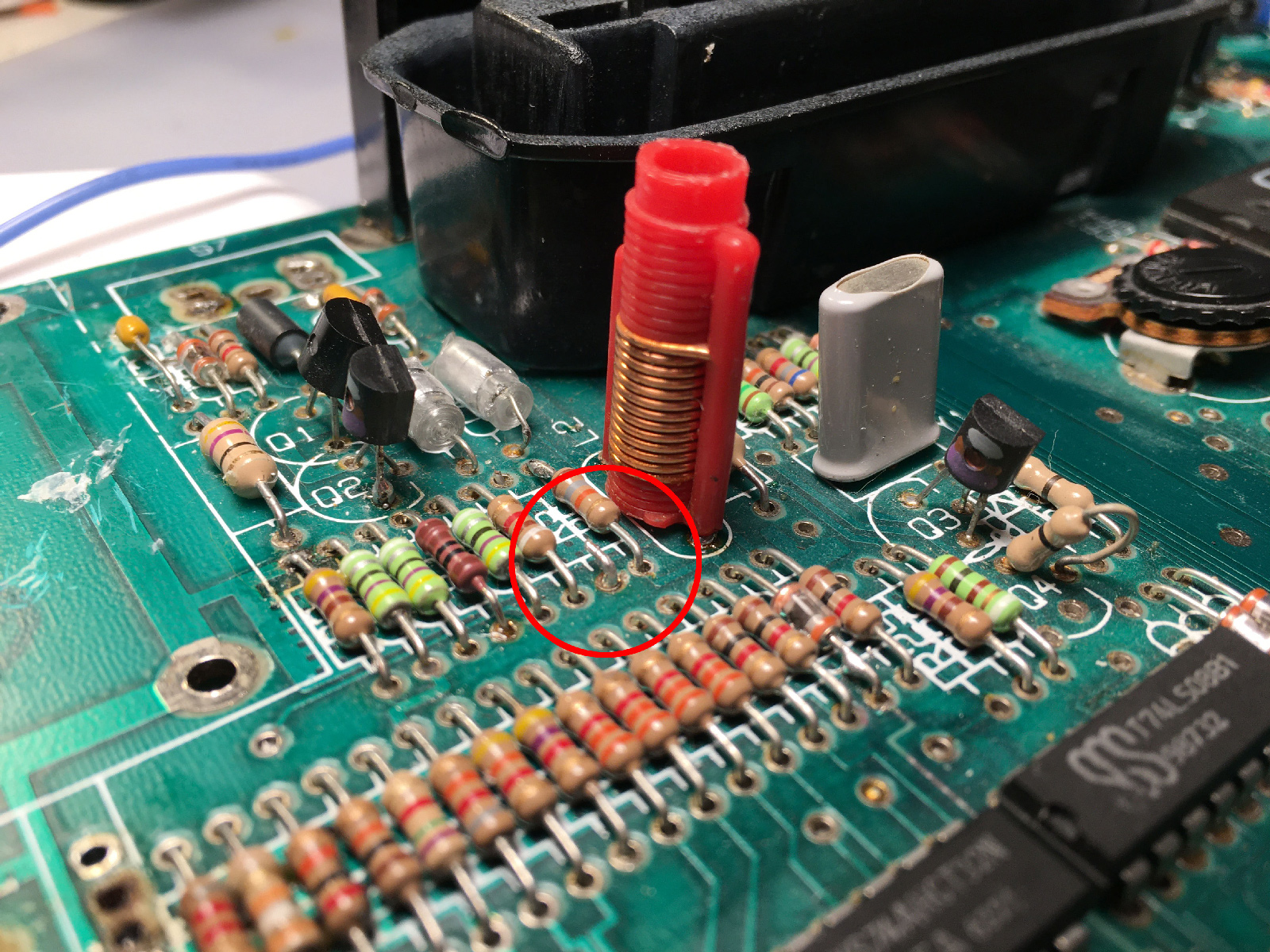
Then used the little clips to hold the audio side in place: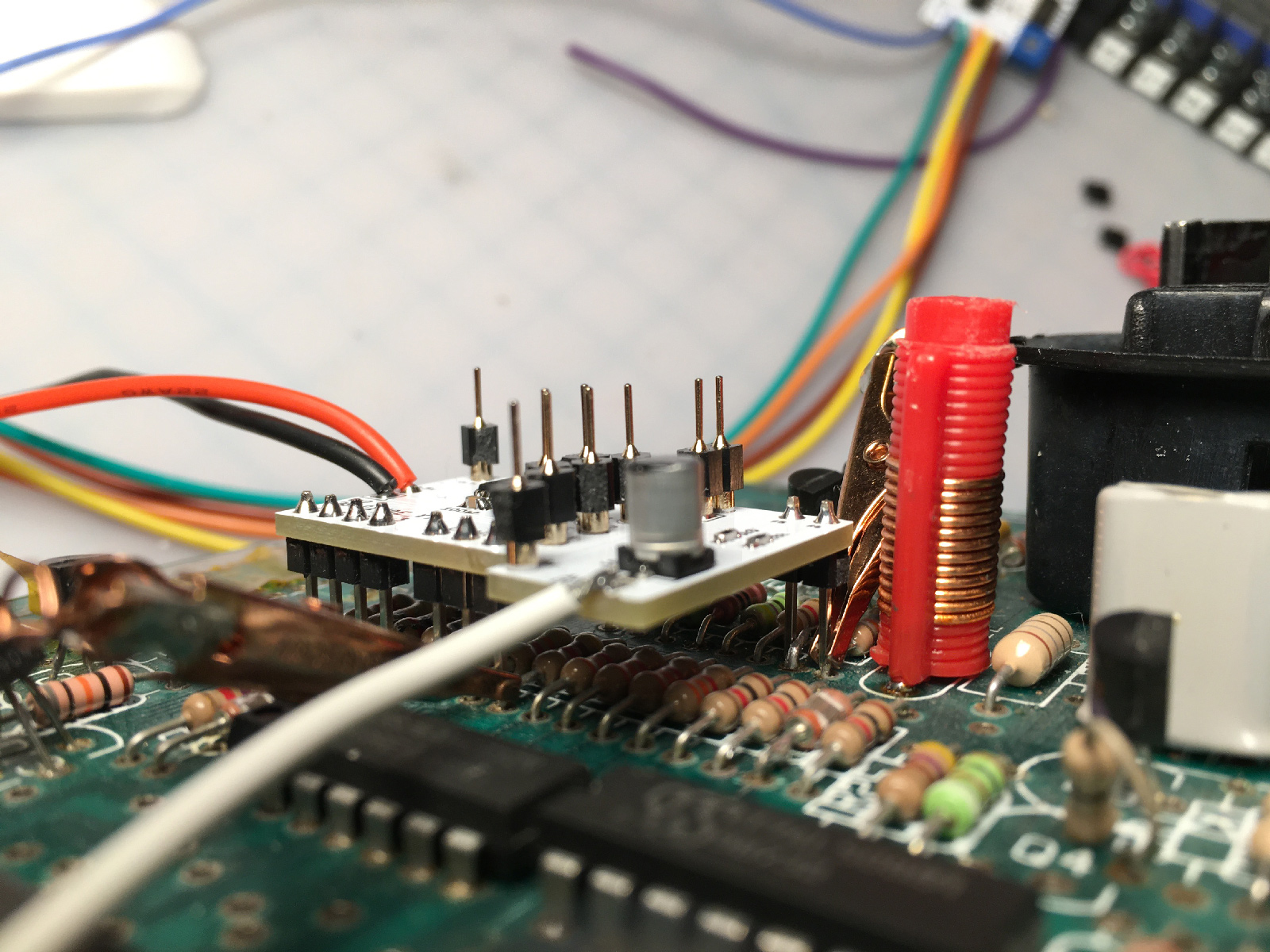
And the video side: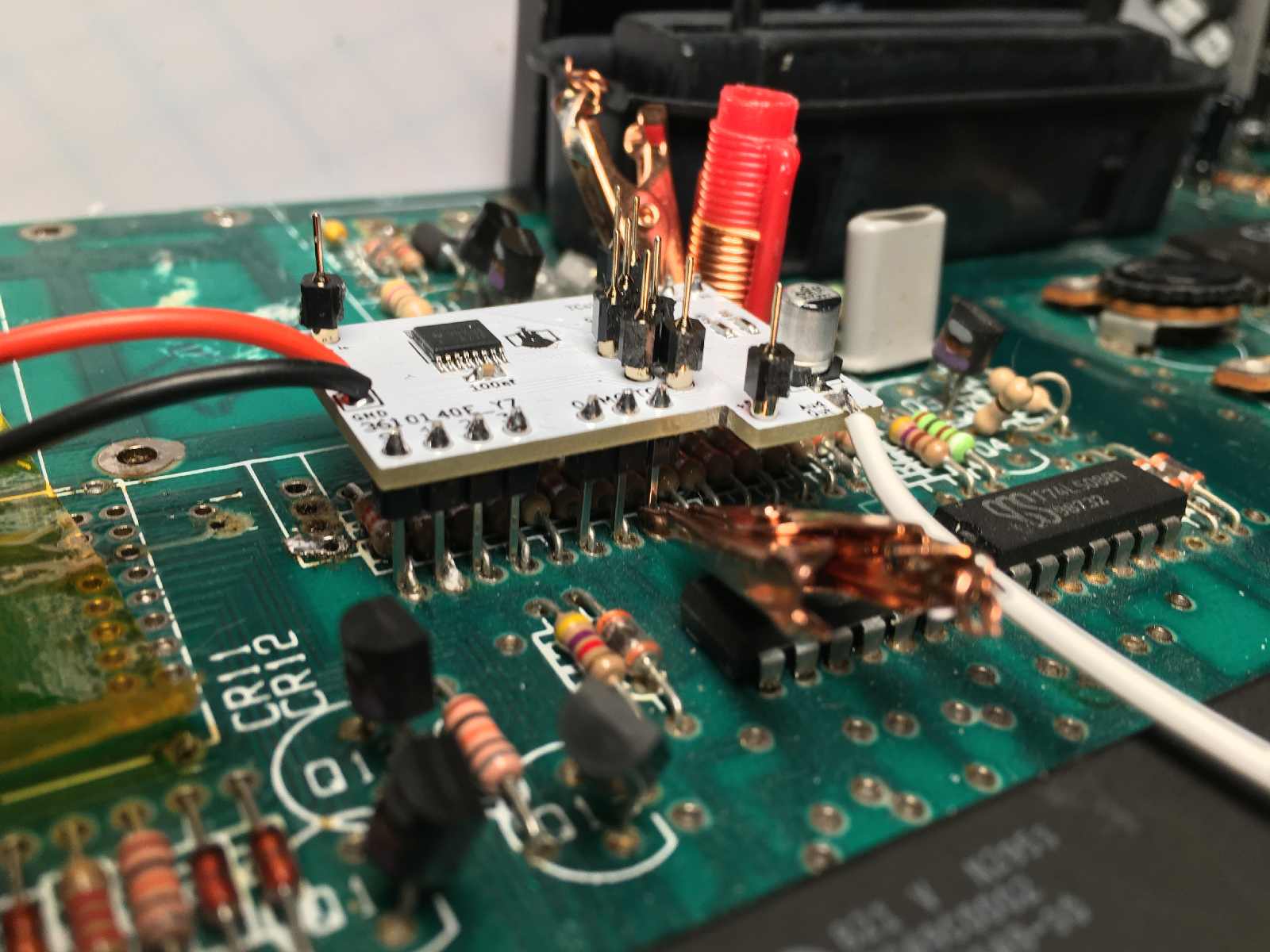
Then, I soldered everything up (note to self: re-read previous note about installing a smaller soldering iron tip next time):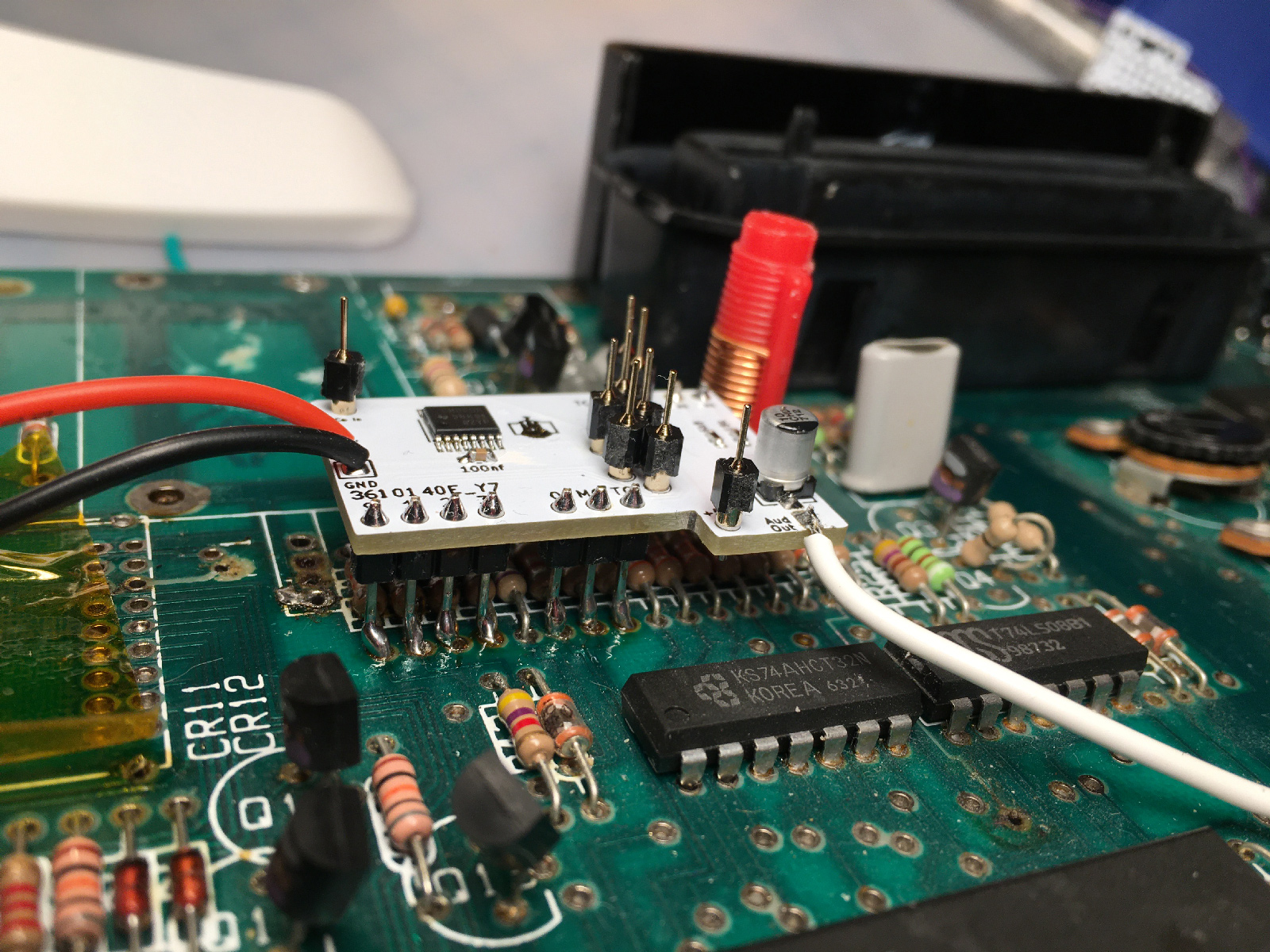
The audio legs were particularly hard to reach. Removing the resistors and just plugging the board in their place would make soldering easier - but you'd have to go through all of the desoldering first.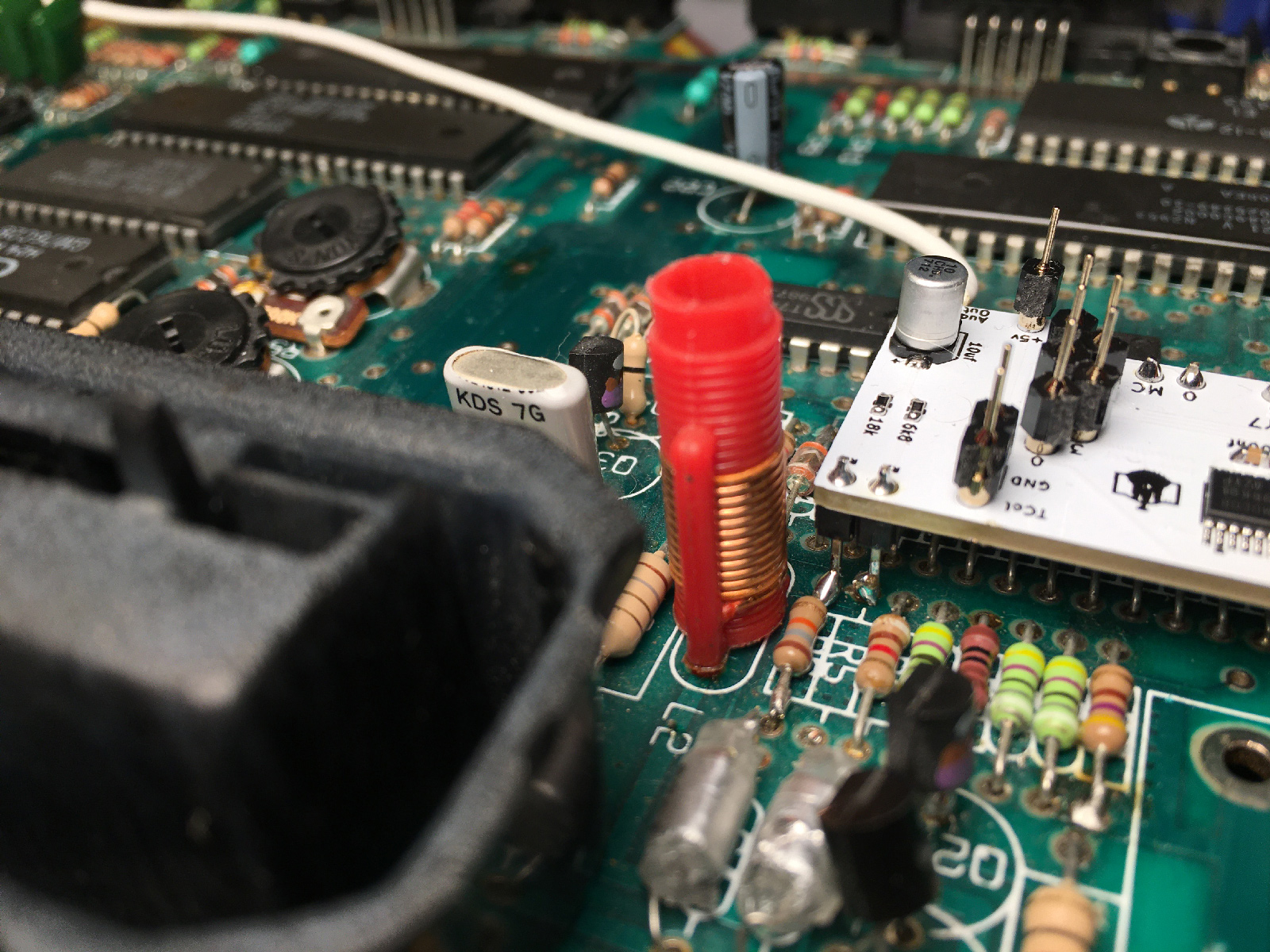
But eventually, I got the board in place: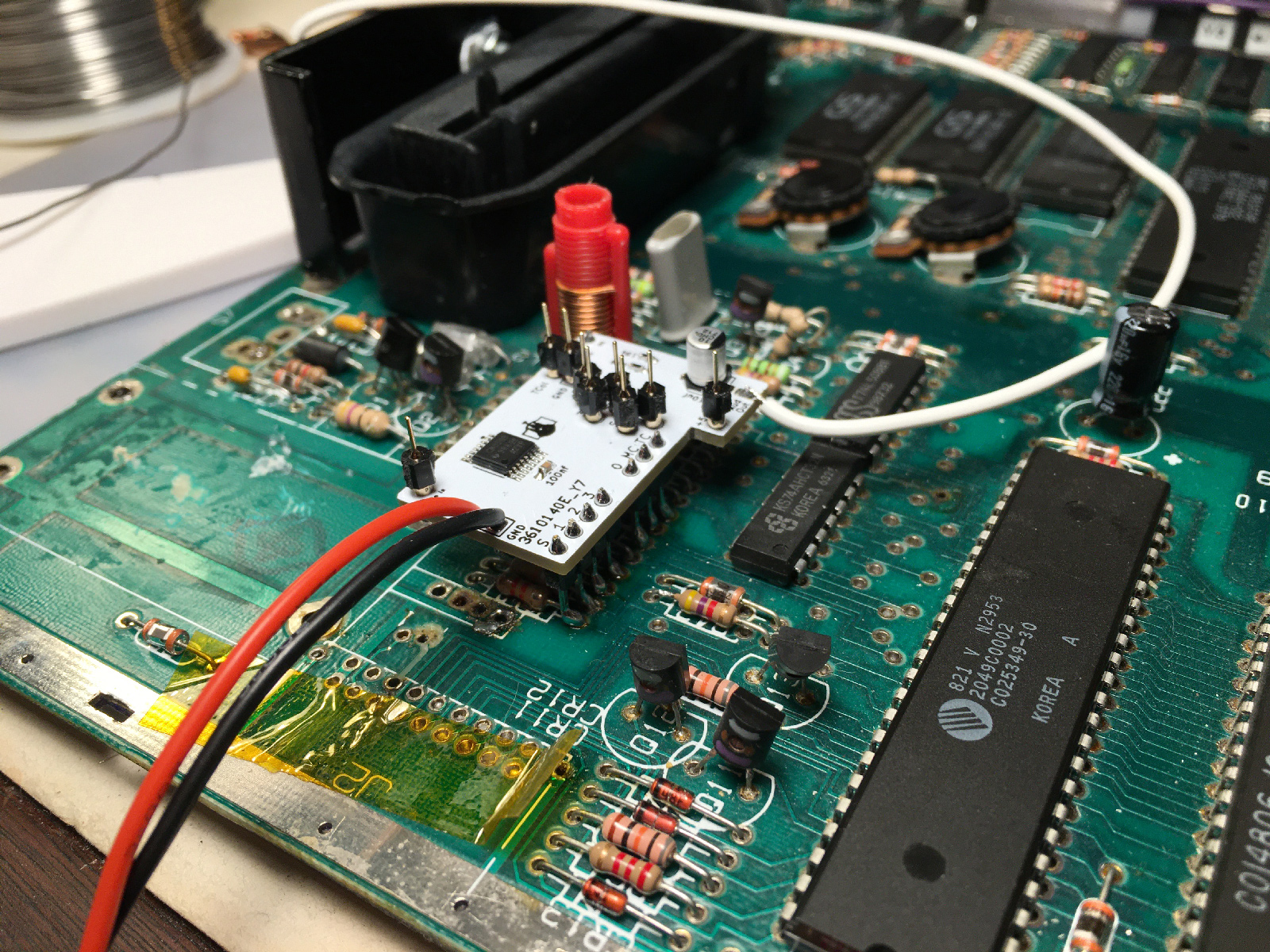
Now, to add the UAV board on top (again with the clips to hold things in place):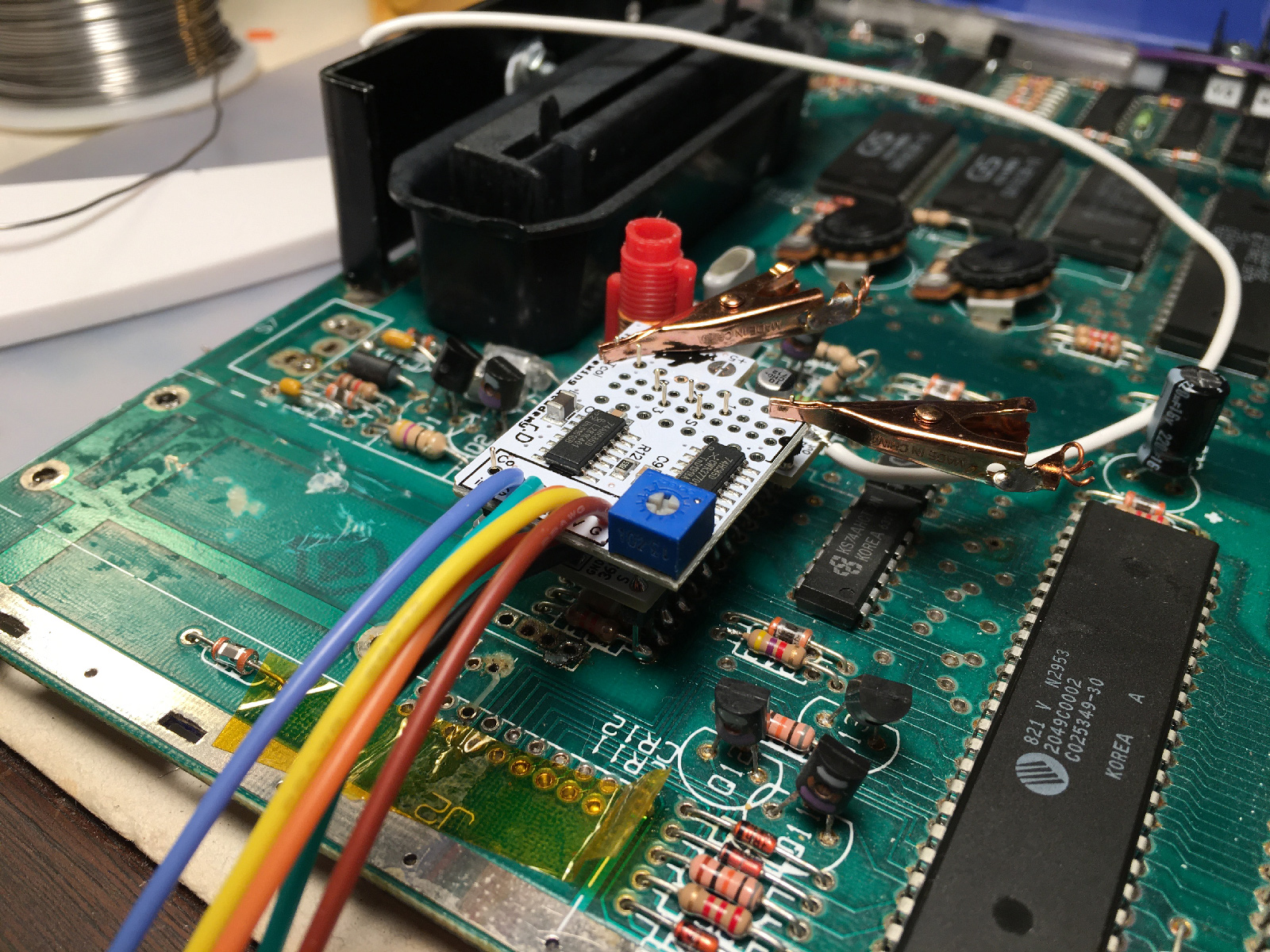
And soldered! (Note to self: soldering. iron. tip. smaller. next. time.)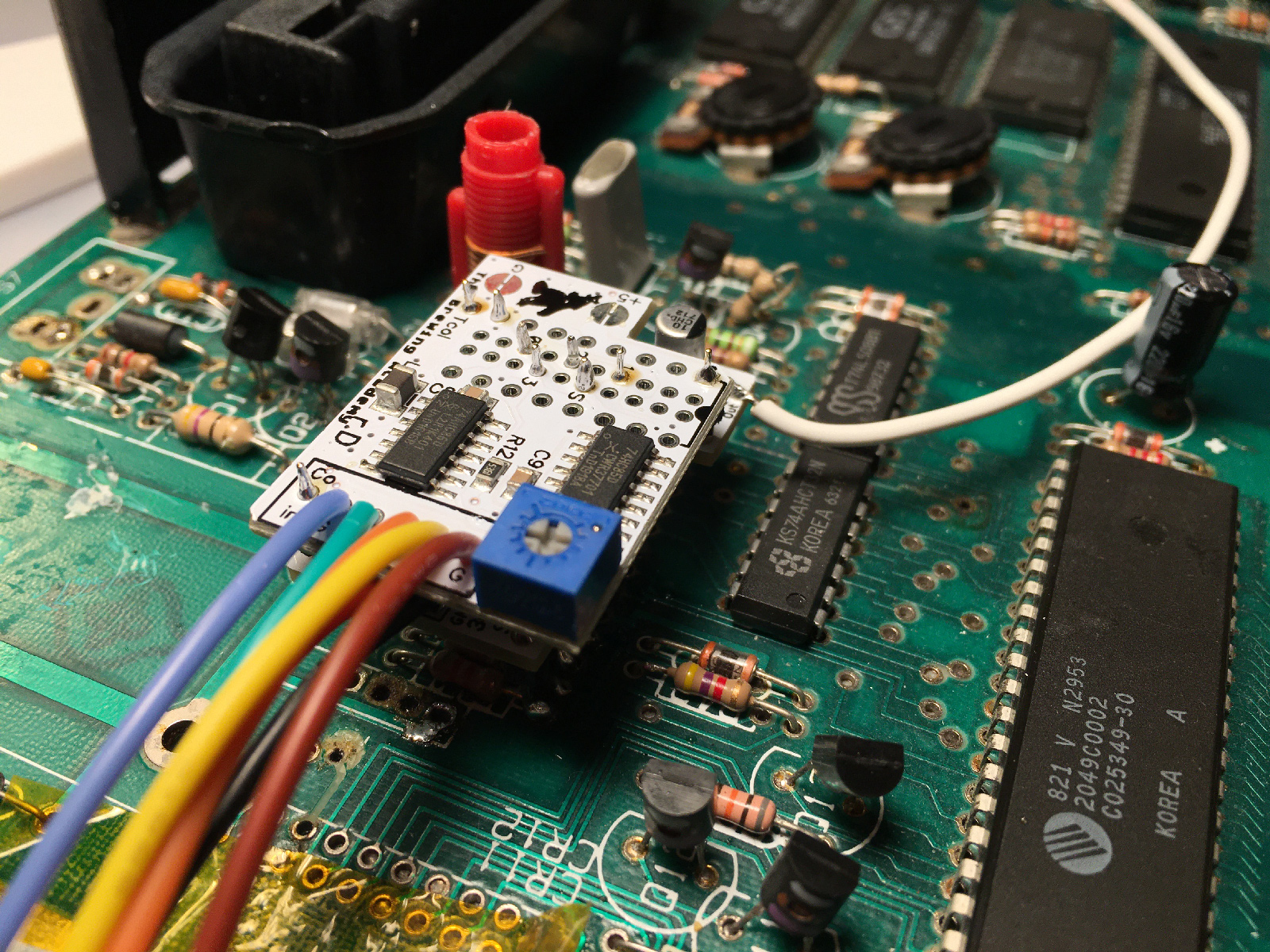
I went through and tested continuity on everything, to make sure it was all properly connected. Some points weren't easily reachable, but that's easy to fix - just wrap a thin piece of wire around your multimeter probe (add tape if necessary) and you can reach pretty-much anything: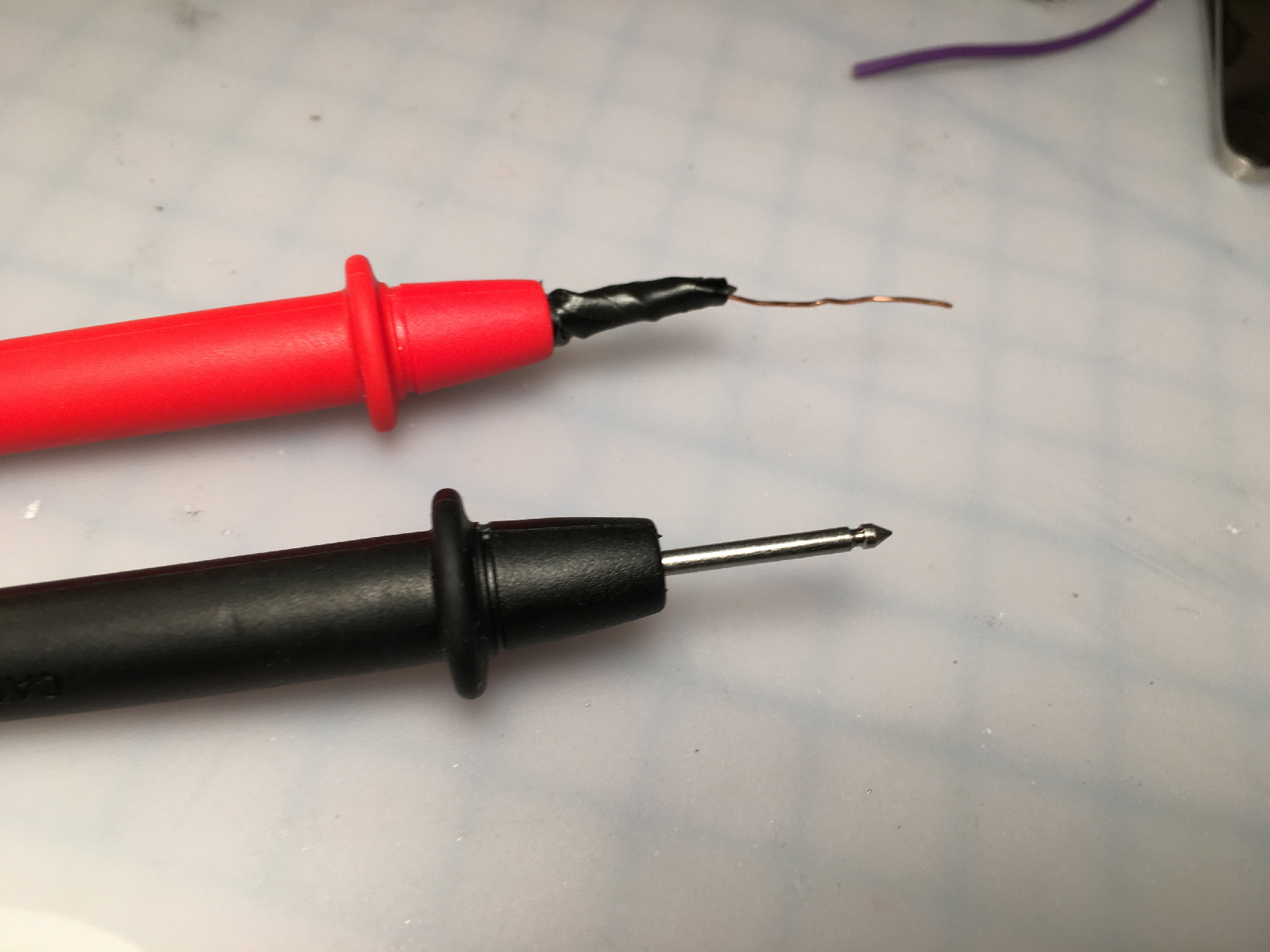
Then, I connected the power and ground. There are a couple of points closer than this to get power from, but the previous modder outright ruined them. For some reason. But this worked fine (they're poked through, and soldered from the underside):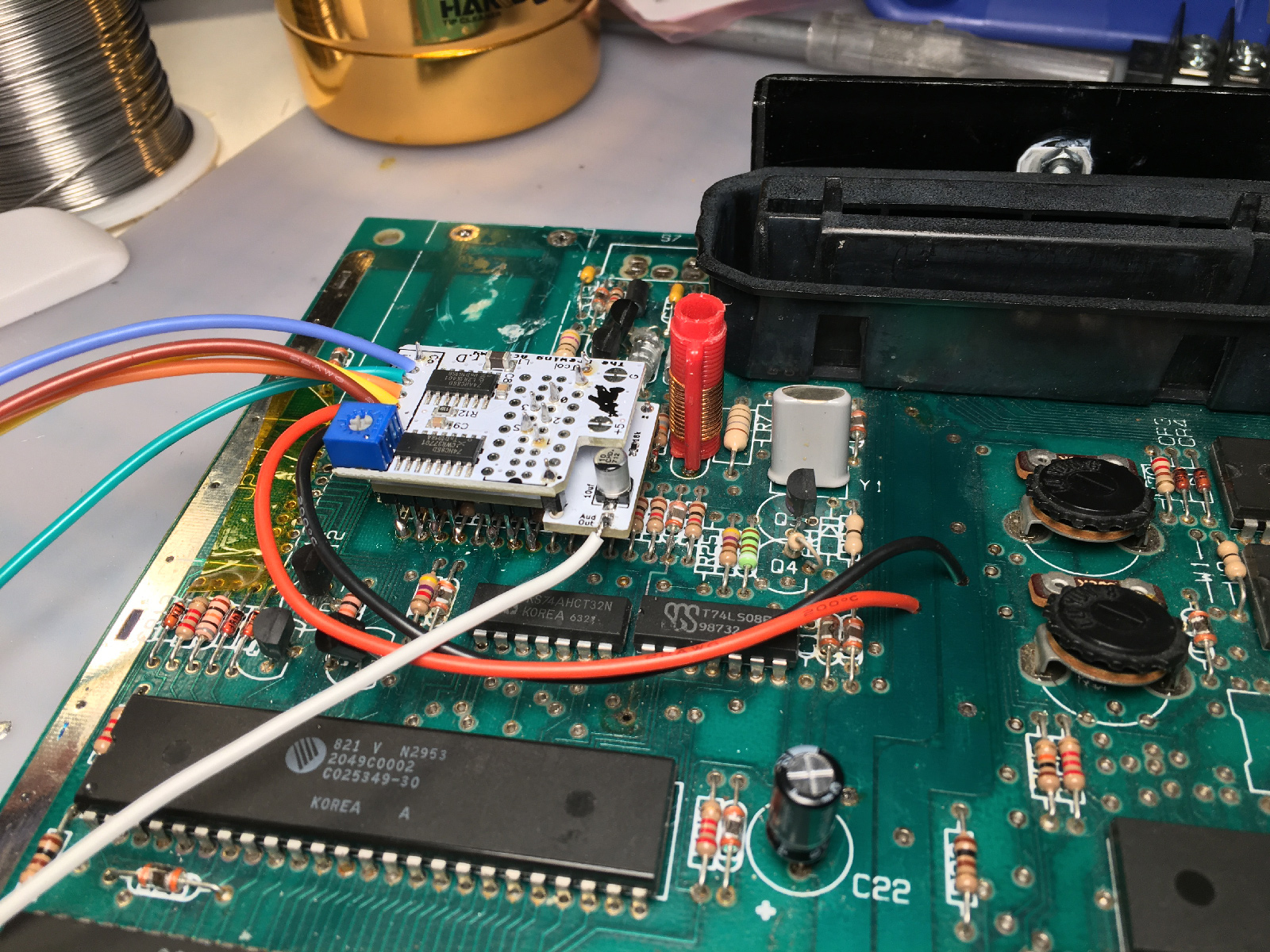
Right! Now to test! I grabbed my handy test board, and wired it up. Usually I have separate left and right audio, but this mod is mono, so I repurposed one of the RCA jacks as composite video (for reasons which will be revealed eventually):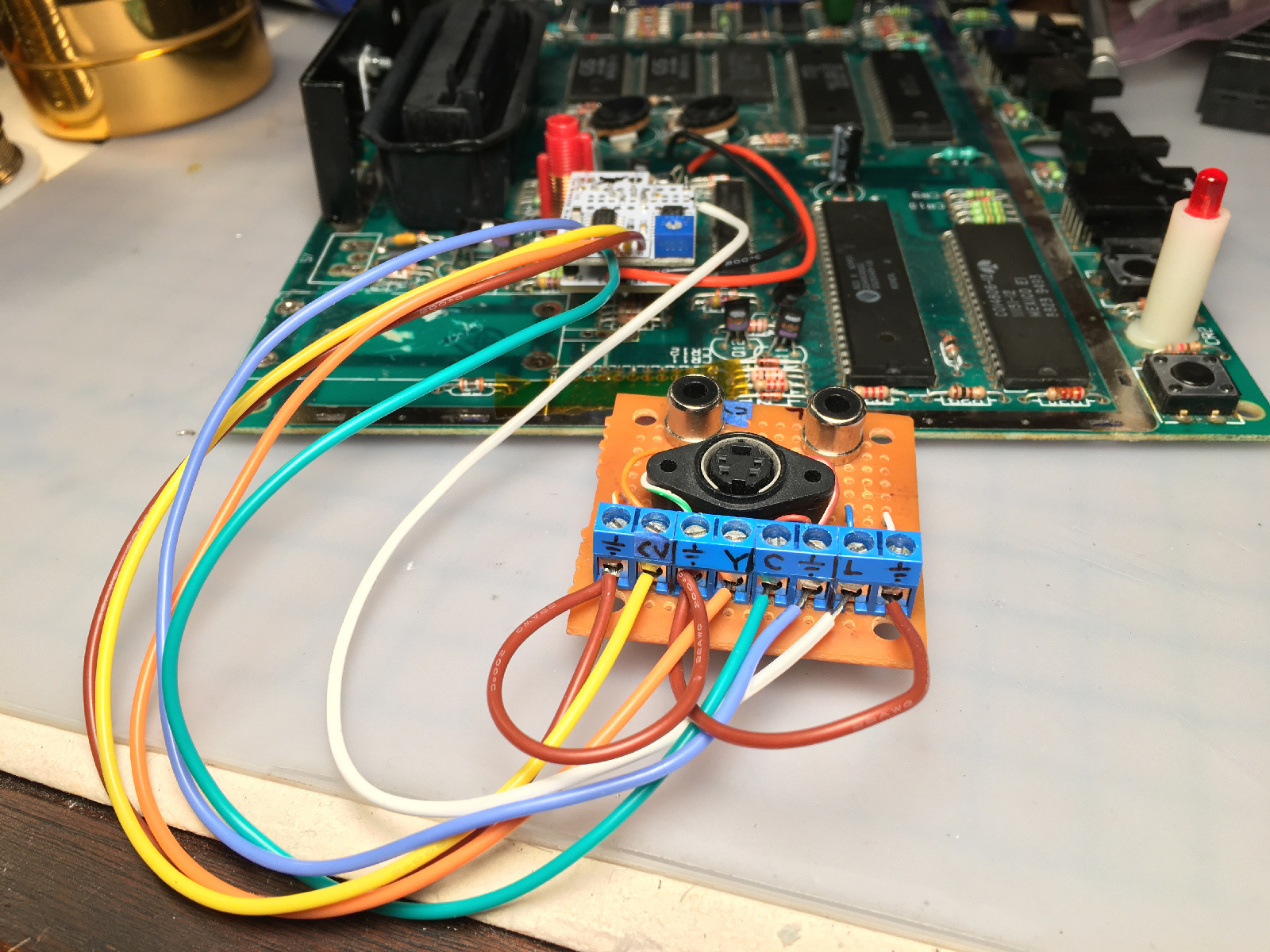
Much to my surprise, it booted up first try! Looked great, too!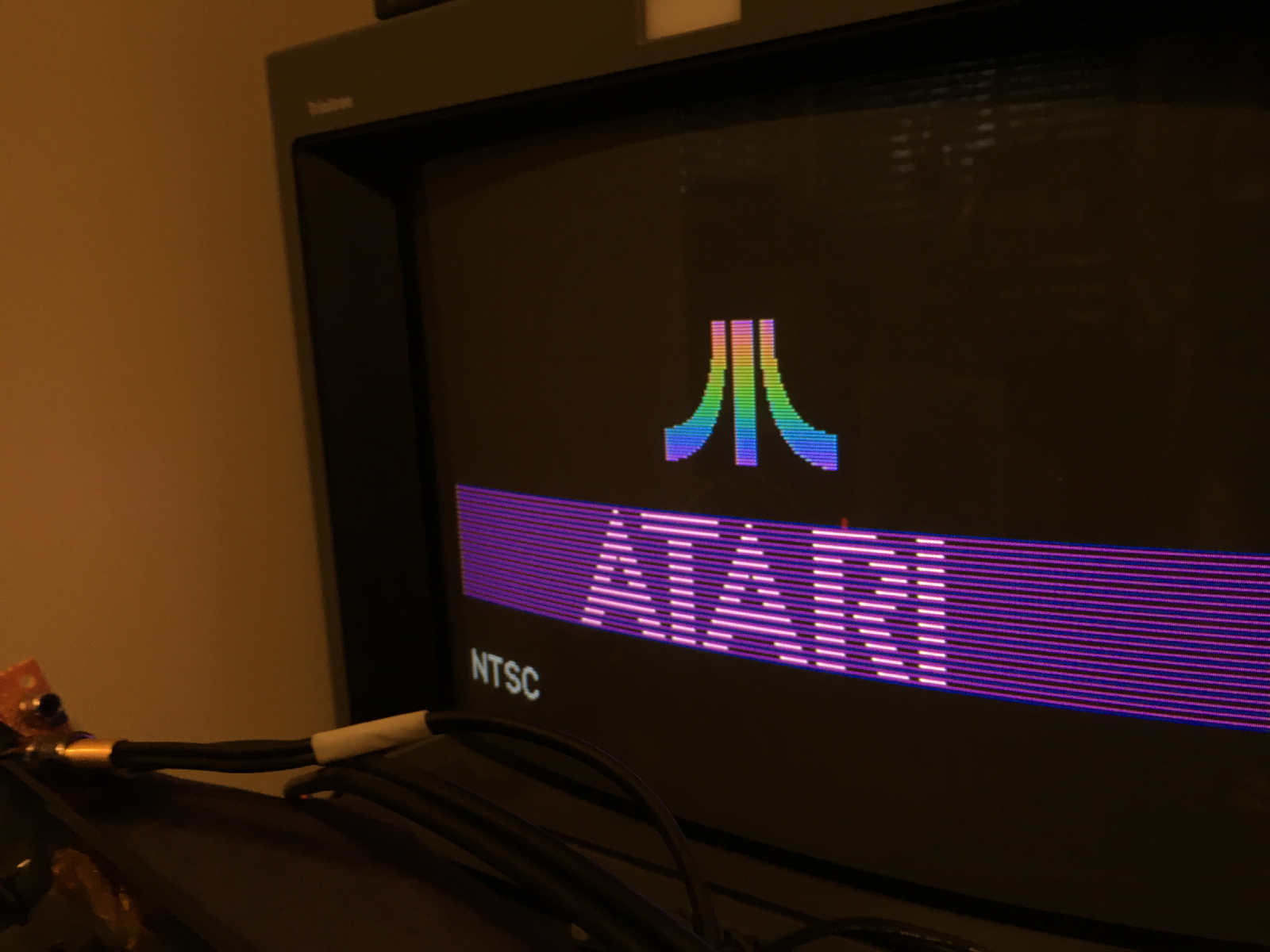
Nice, clean, crisp display! And it's not totally washed out by the LED anymore, either!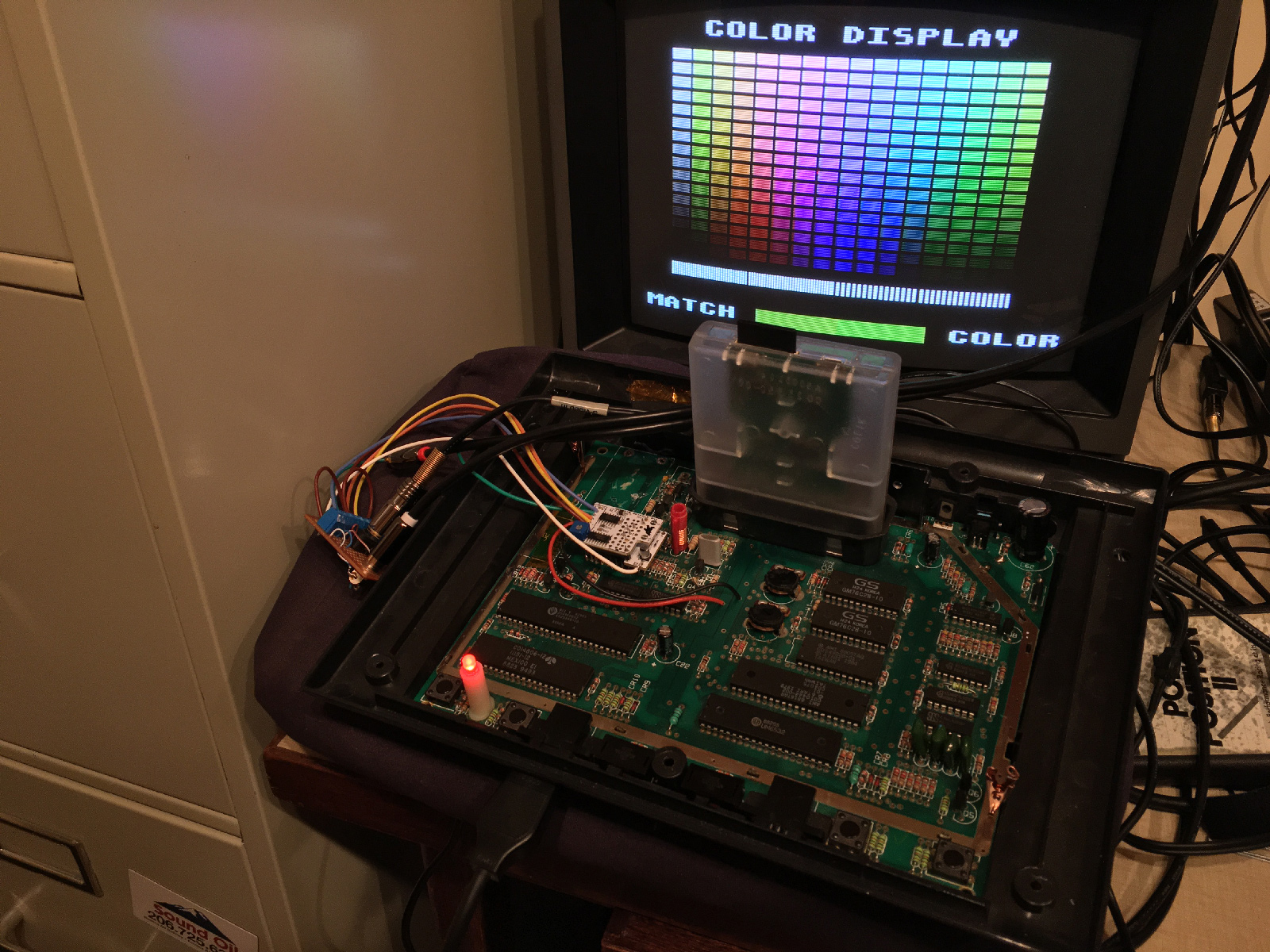
But... here's a question I have for all o' you tech-heads out there, and this has been bugging me for years. This 7800 Utility ROM says to "Match Color" between both sides of that bottom color bar (note: I haven't made any color adjustments):
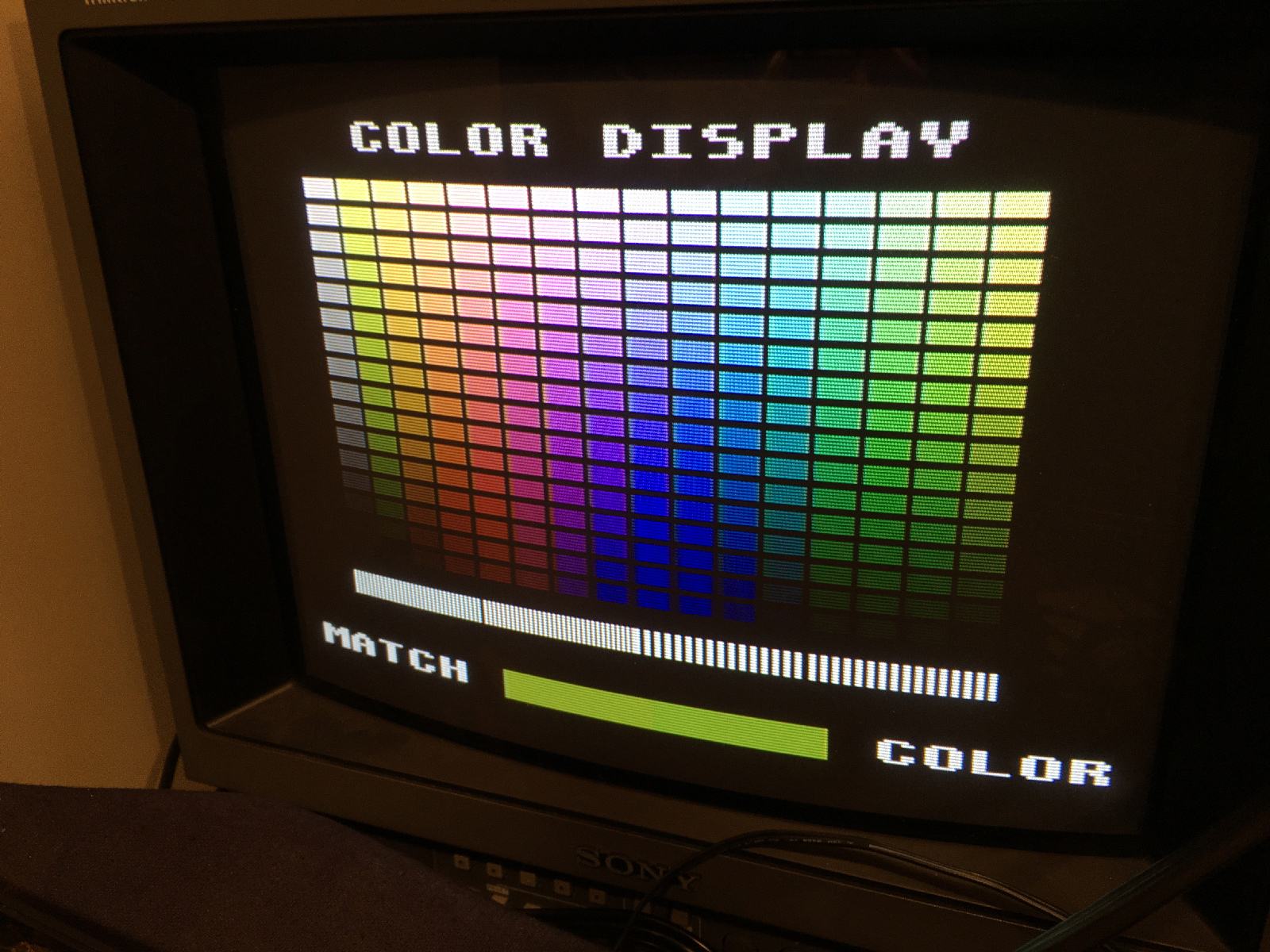
Similarly, the 2600 Color Bar Generator instructions also says to match the two background colors at the title screen:
The 2600 field service manual has somewhat contradicting instructions for Atari's Diagnostic Cart, saying to adjust the colors so "the bars immediately above and below the reference line are within one shade of each other." But in the diagram, it points to them and says they should be the "same color".
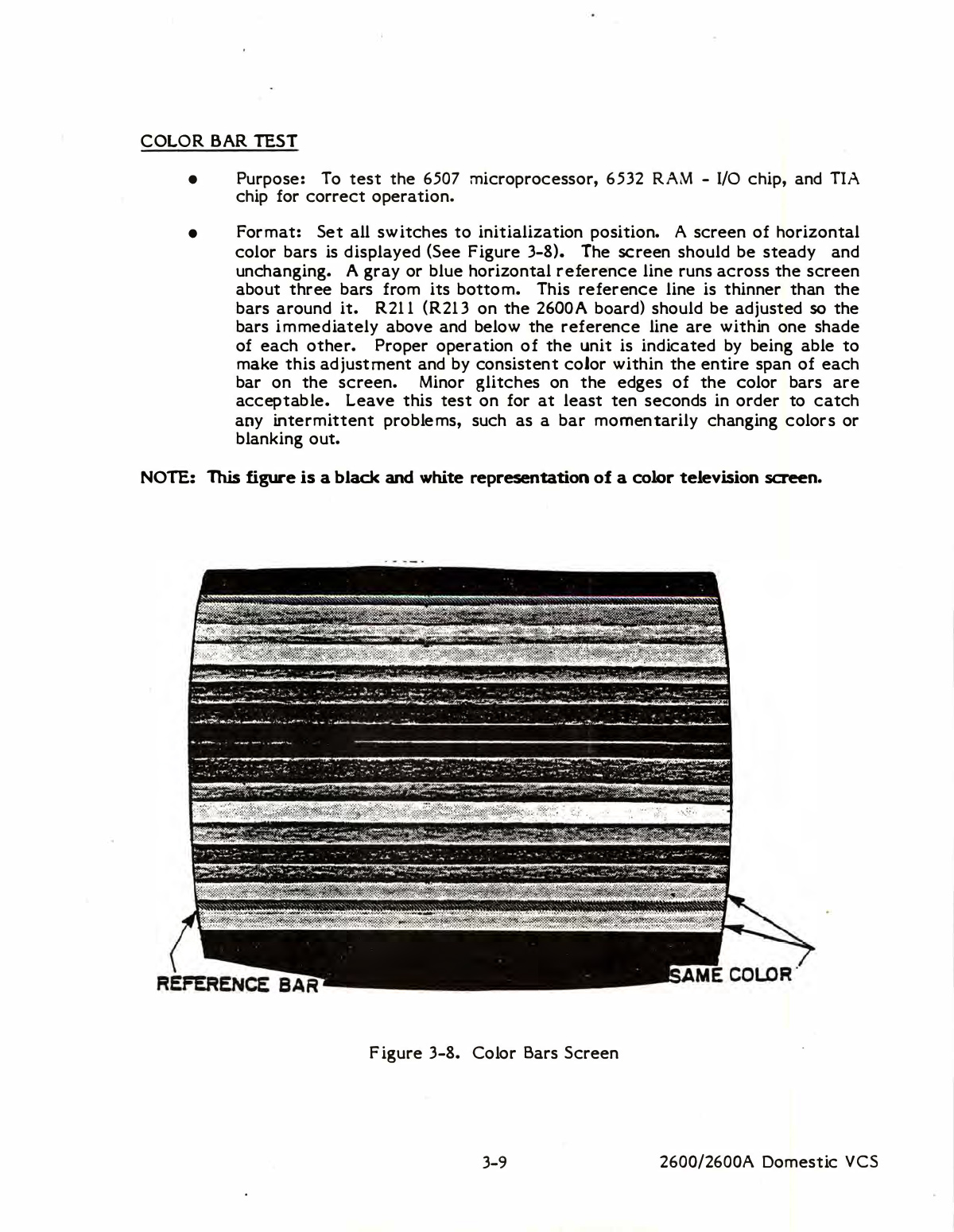
Here it is, running on this 7800:
Maybe I'm being picky, but "within one shade" is not the same as "same color". More to the point, these aren't the same color. Stella shows the top color as F6, and the lower one as 16:
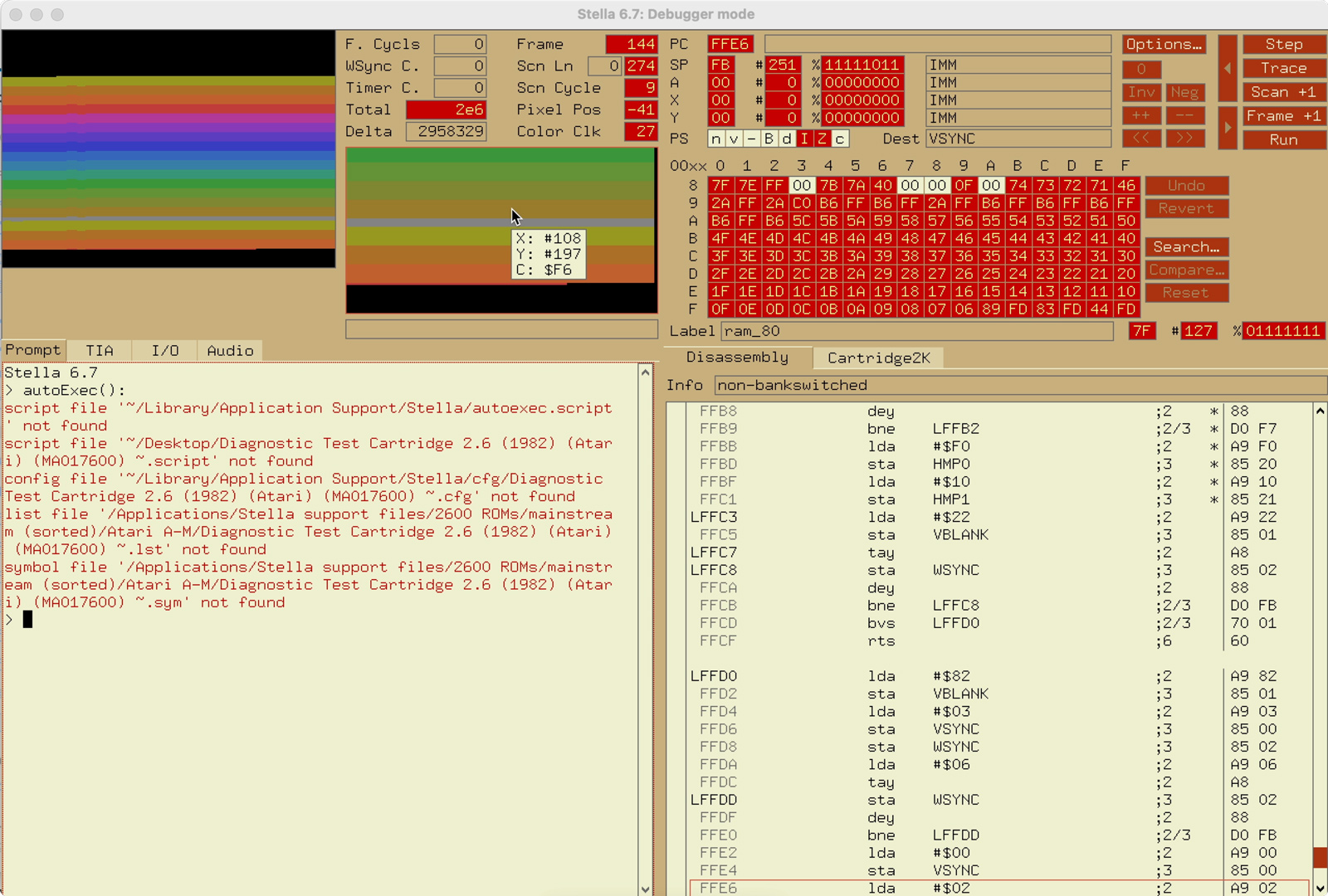
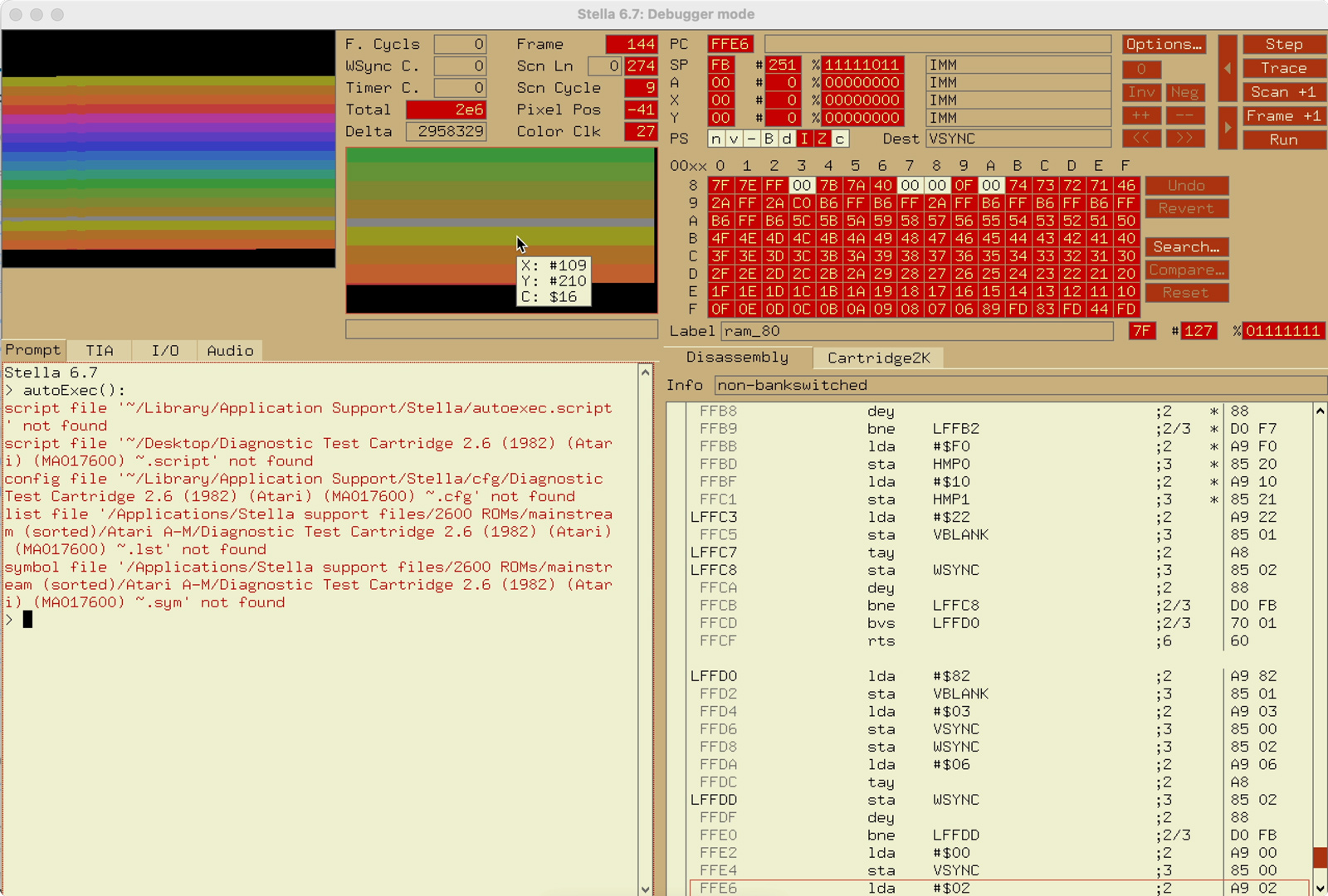
So the question is... is the whole "match these two colors" thing wrong? Seems to me, if they're different colors, they shouldn't match. I wonder if Atari put that in their service manual as a quick "close enough" adjustment instruction, and everyone has just copied it ever since? The problem I've found, is that when I've adjusted 2600's so those two colors match, everything is shifted too much to be green. The browns effectively disappear from the palette. I don't think that would've been the original designers' intent.
Wonder who we could ask about this? ![]()
Anyway... back to the 7800.
While the video worked first time out... sadly, the audio was not so lucky. As I ran the audio test on the 7800 Utility ROM, I got zip. Nada. Nothing. At least, not from the TIA side of things.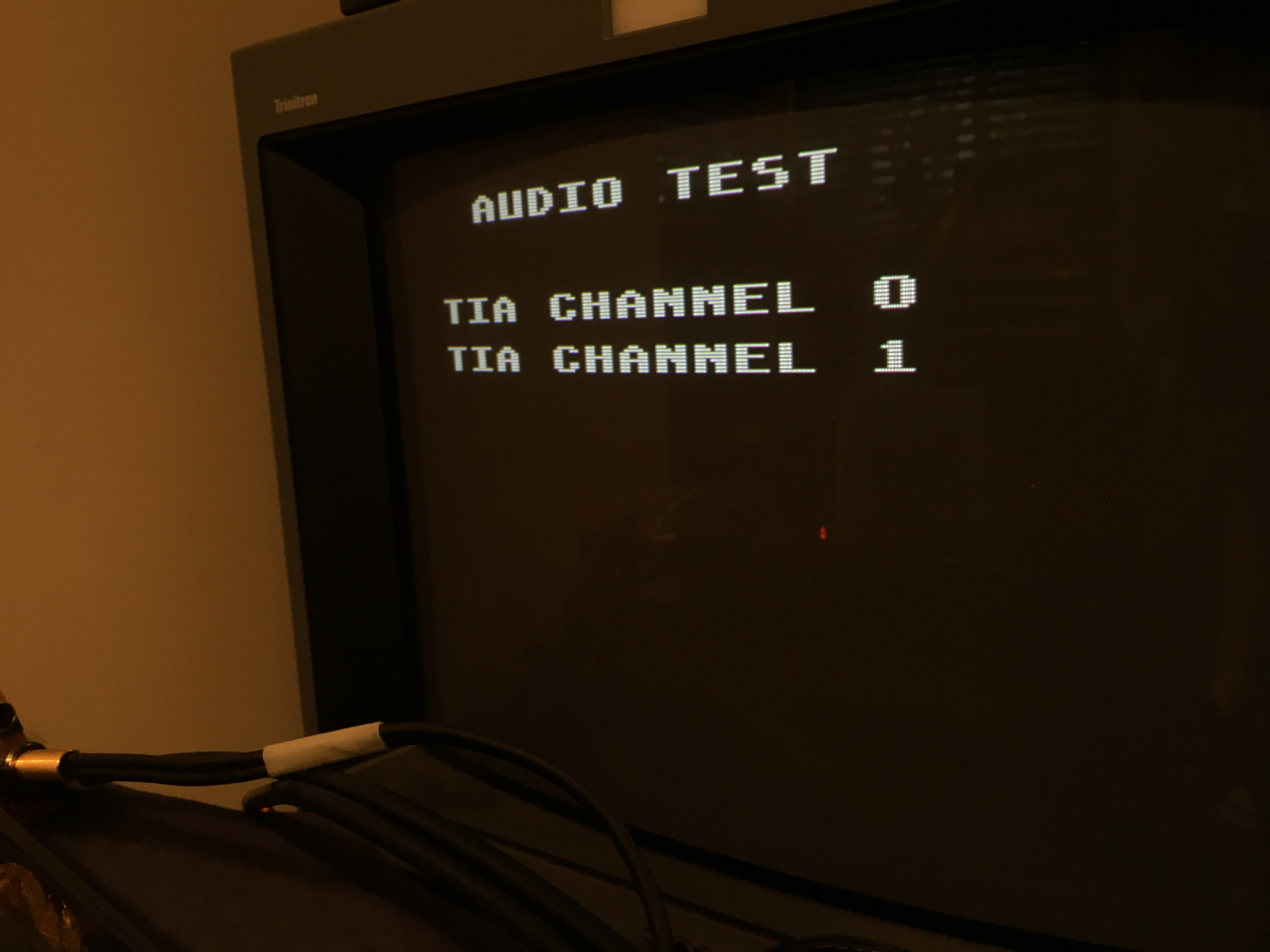
Great. So... what did I break? The TIA audio worked with the earlier mod - but that was completely ripped out and gone now. Did I mis-wire something? Fry the audio board? Is the TIA borked? Is some component still missing?
I thought at this point, I'd just end this blog entry with non-working audio, and see if alex_79 or -^CrossBow^- or someone would chime in with some ideas.
But... ![]()
Then I thought, "I wonder if the POKEY works?" So I fired up Ballblazer, and the audio there worked! (Love the THX-like intro sound.)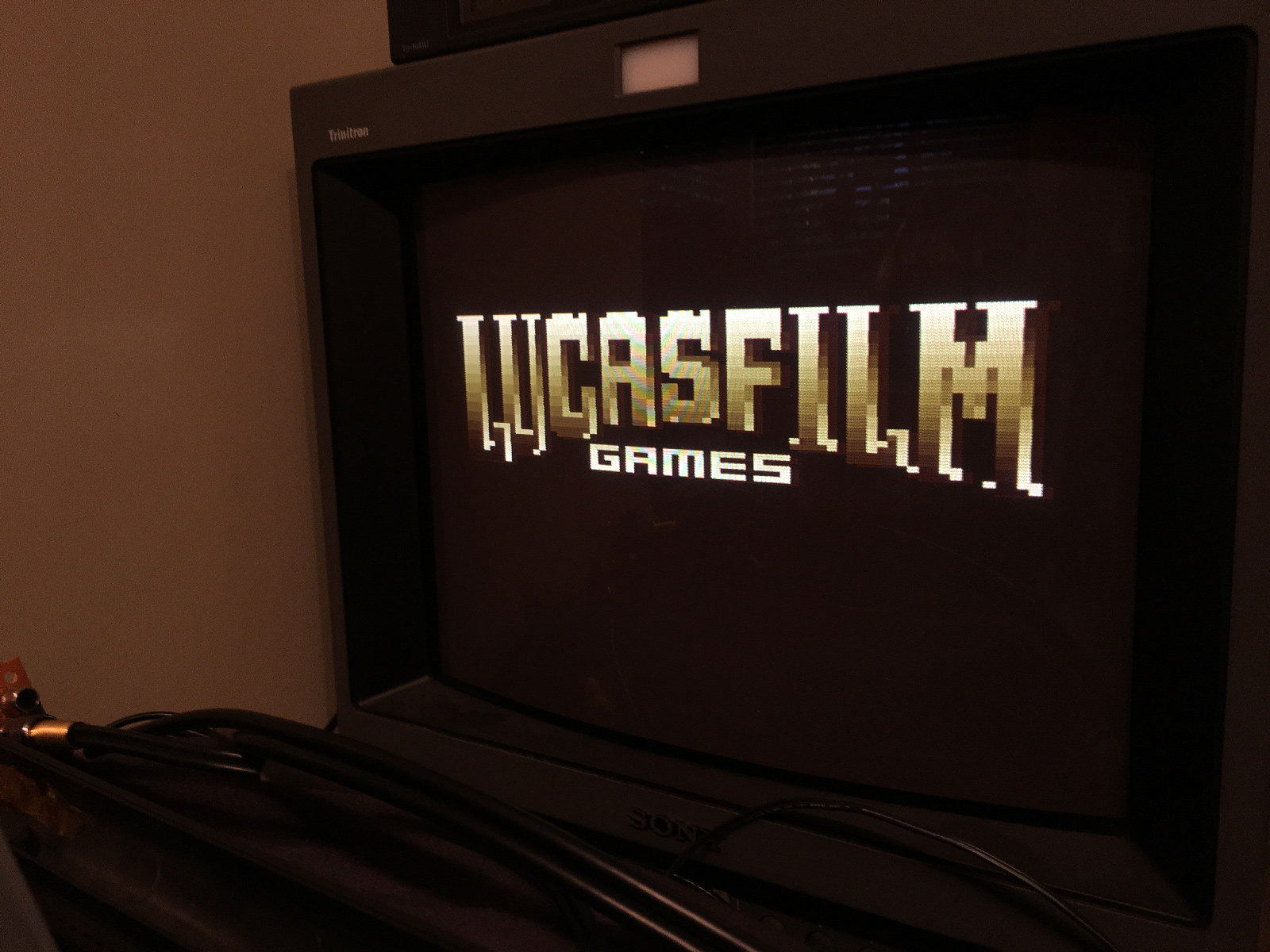
Okay. The audio board is okay. My output wiring is okay. The stuff I replaced earlier (C10 and R5) are okay because they tie into the cartridge port for the POKEY.
The TIA audio just isn't getting where it needs to go. So I dug through the schematics, and started tracing. Pins 12 and 13 of the TIA are combined, and then eventually run over to the base of C14. Pins 12 and 13 were tied into directly for the previous mod. So lets see where that leads us...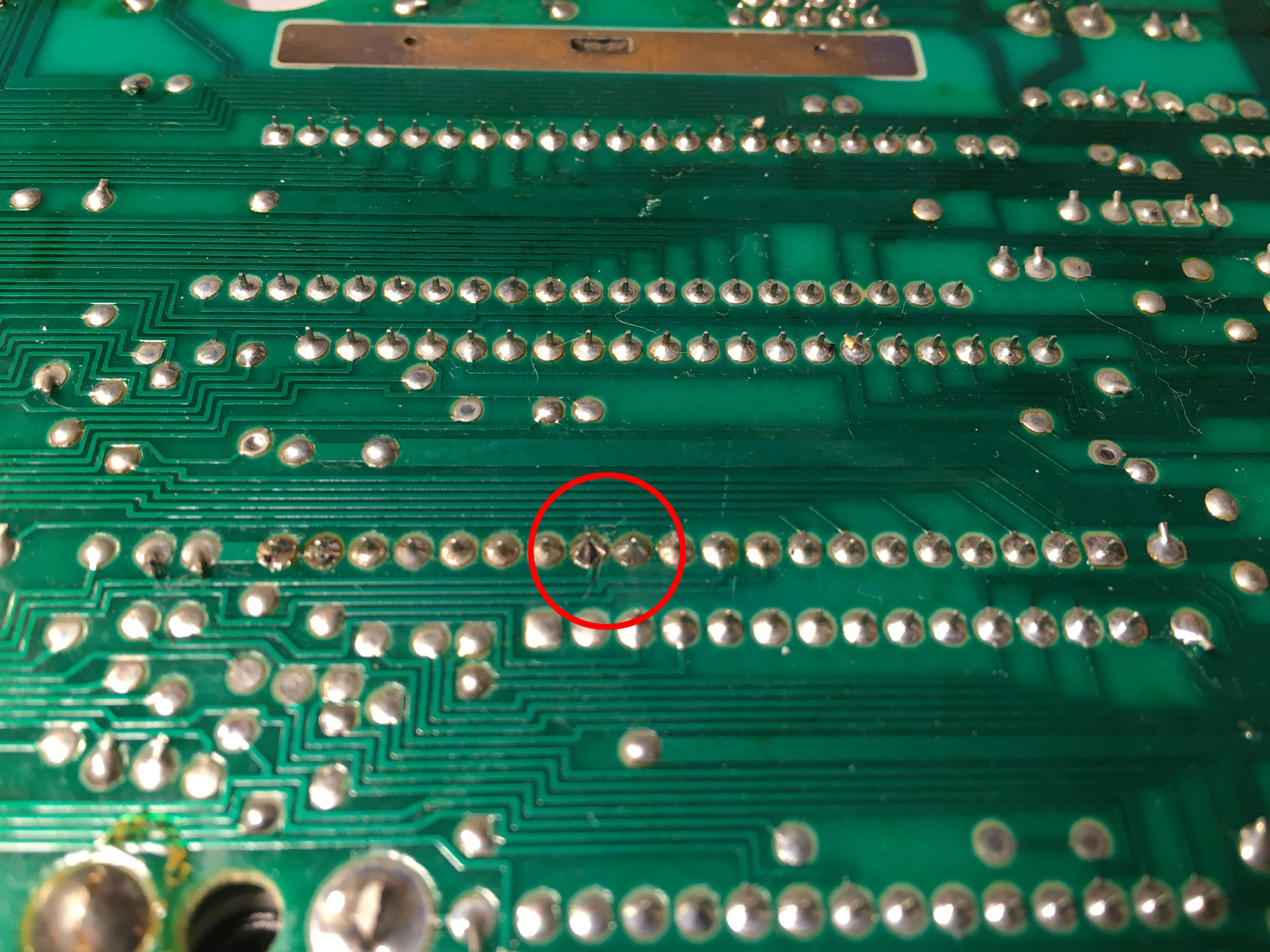
Hmmm. A hole. There's not supposed to be a hole there (I checked this against my non-mutilated 7800):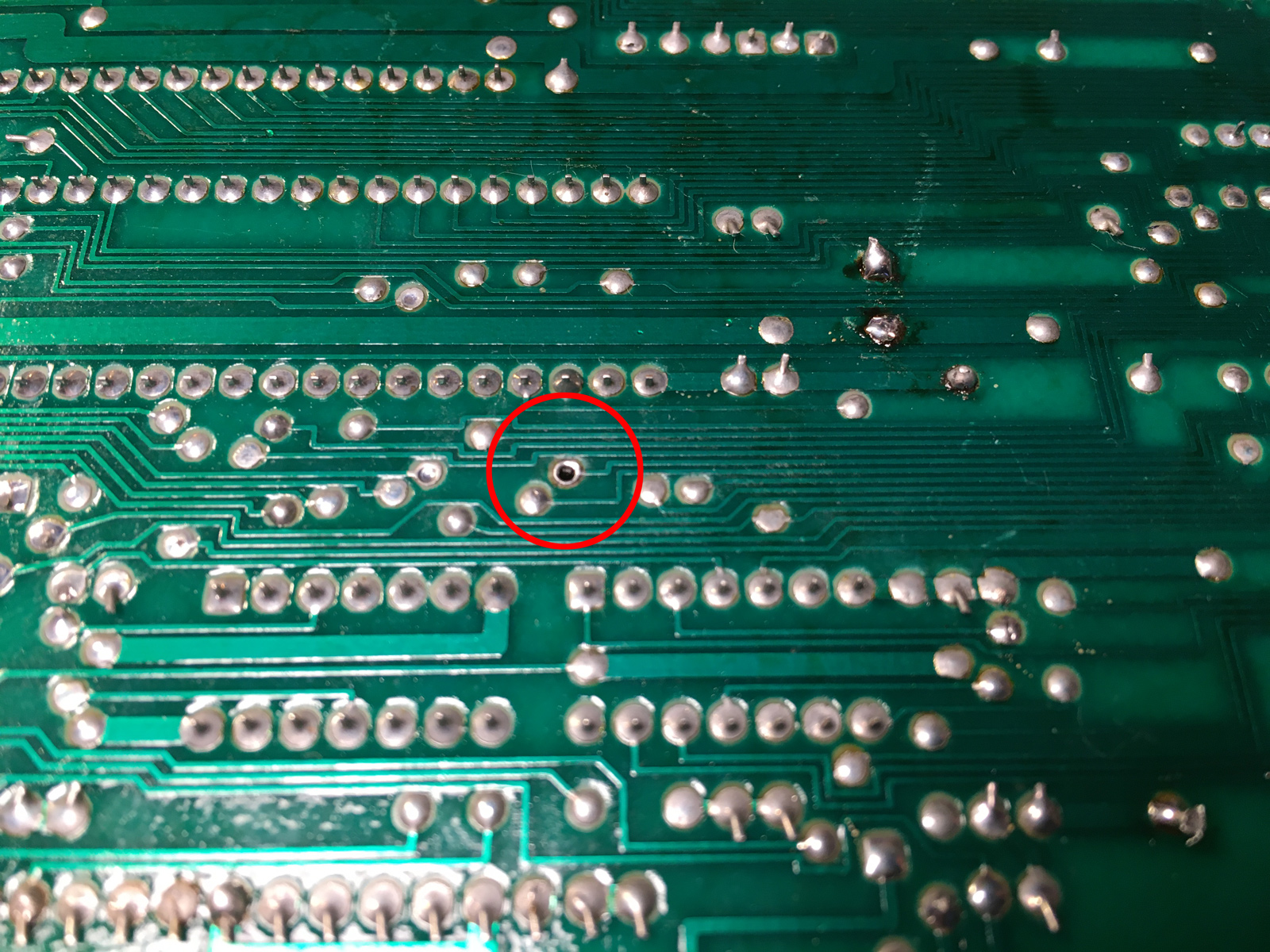
What's on the other side... What the fluffernutter?! The entire trace has been obliterated! What kind of a nincompoop does that? He only needed to clip the leg of the capacitor! $#%!!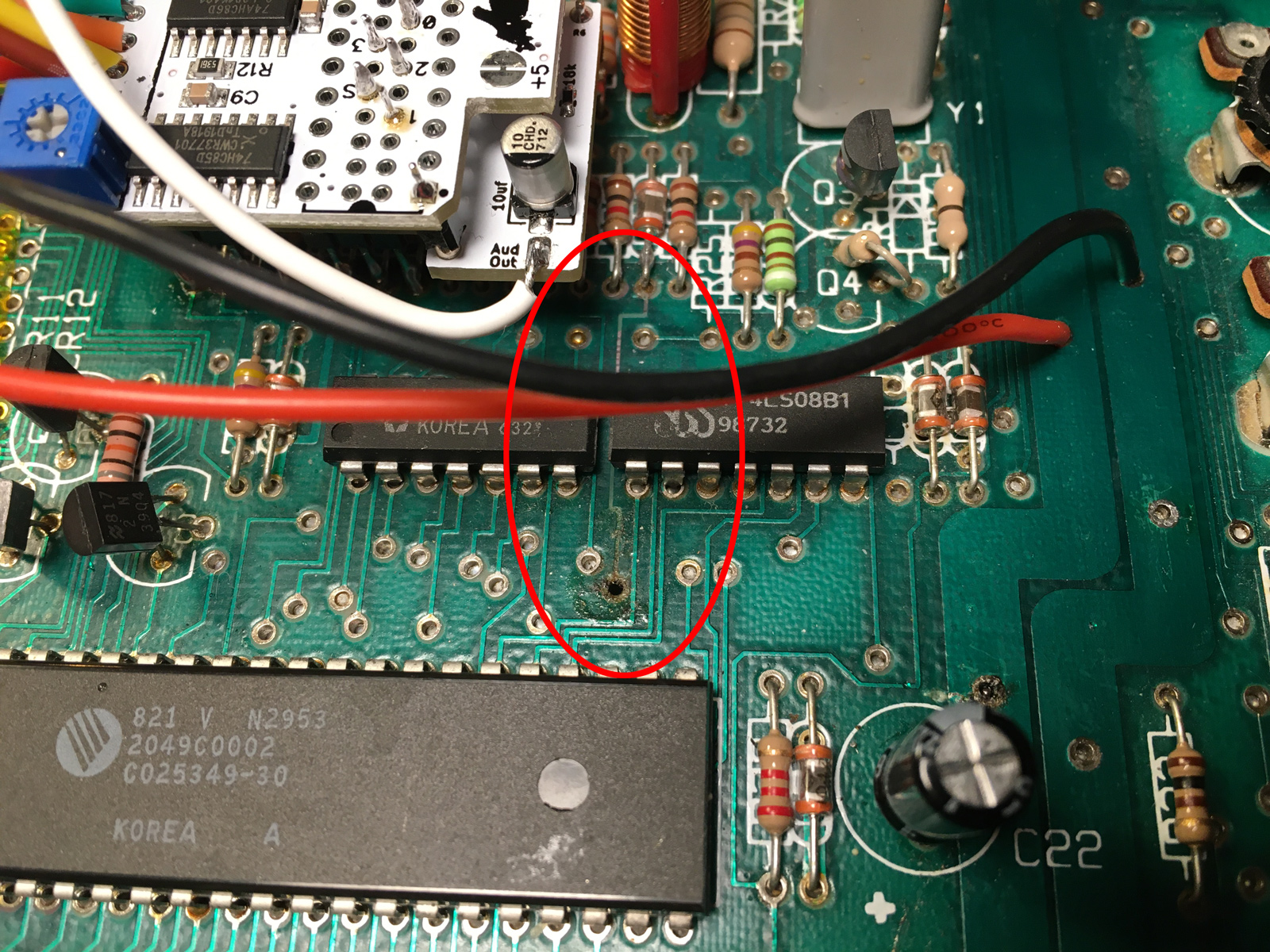
Ugh. Okay, well at least that explains it. So I bridged the missing trace with a purple wire (one of the few colors I haven't used yet):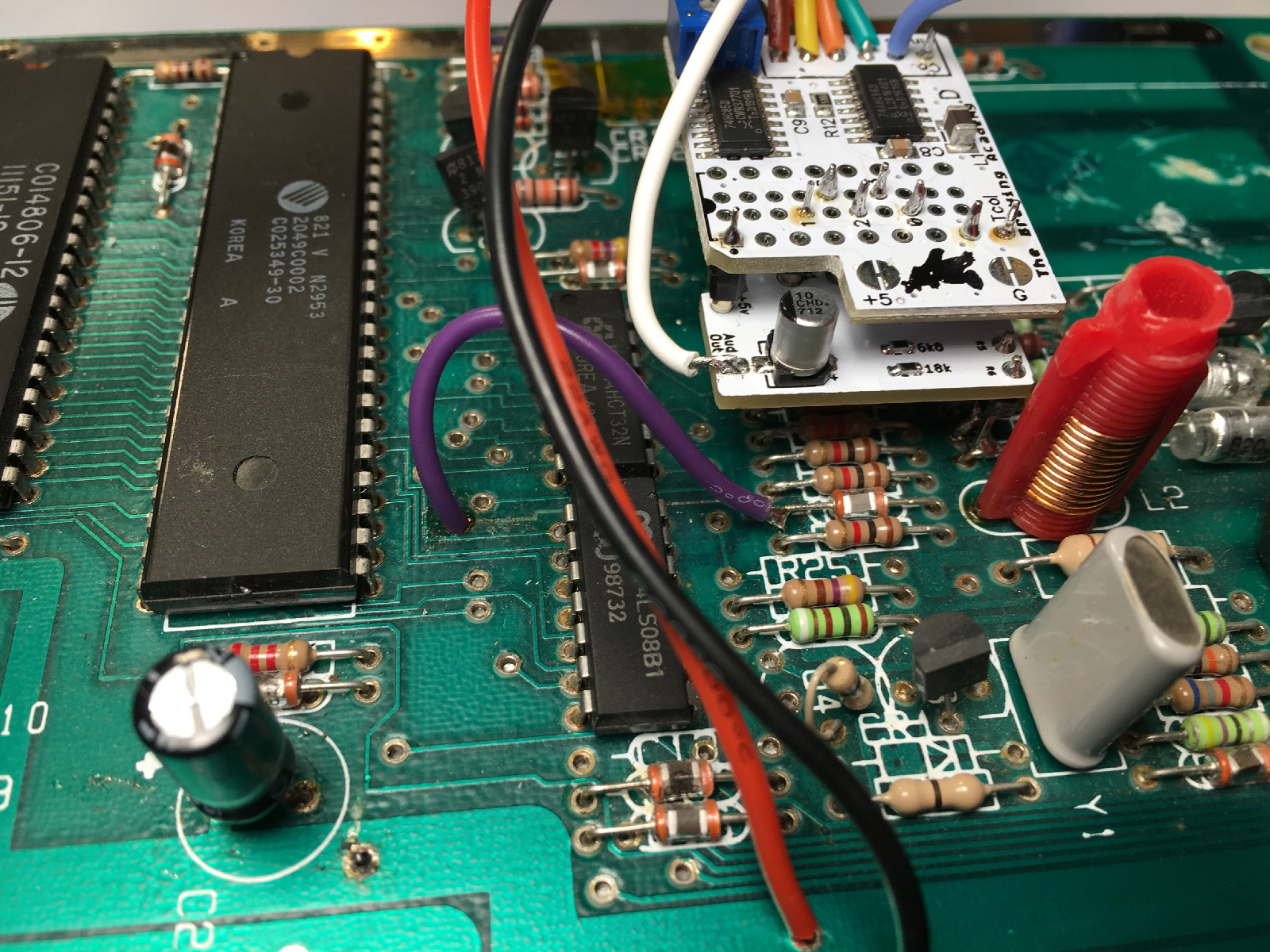
And presto! AAUUGGHH!! What happened?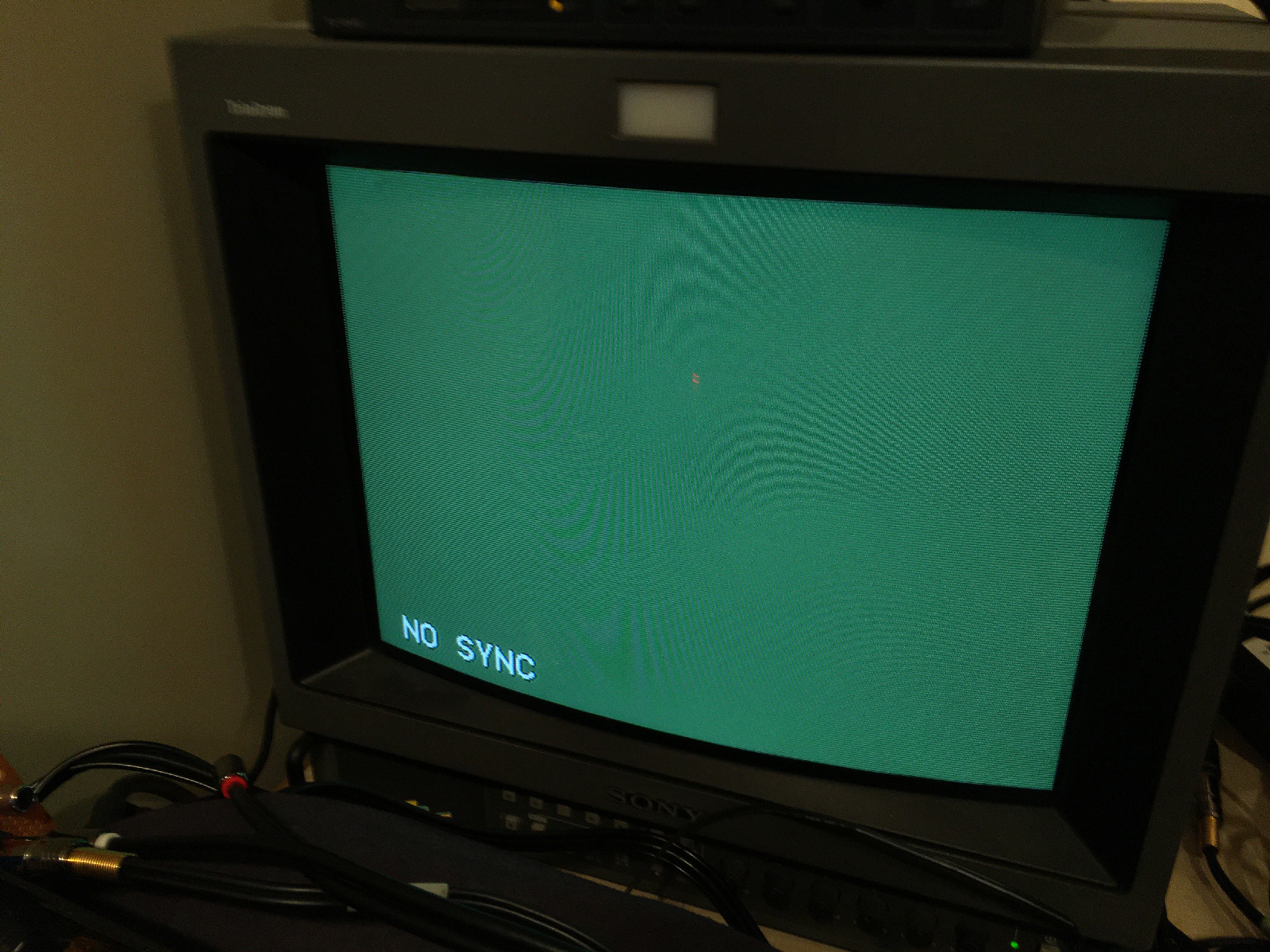
Heh. Forgot to plug in a cart.
Okay. Back to the audio test. Well... Channel 0 works. But nothing from Channel 1. Back to the circuit board.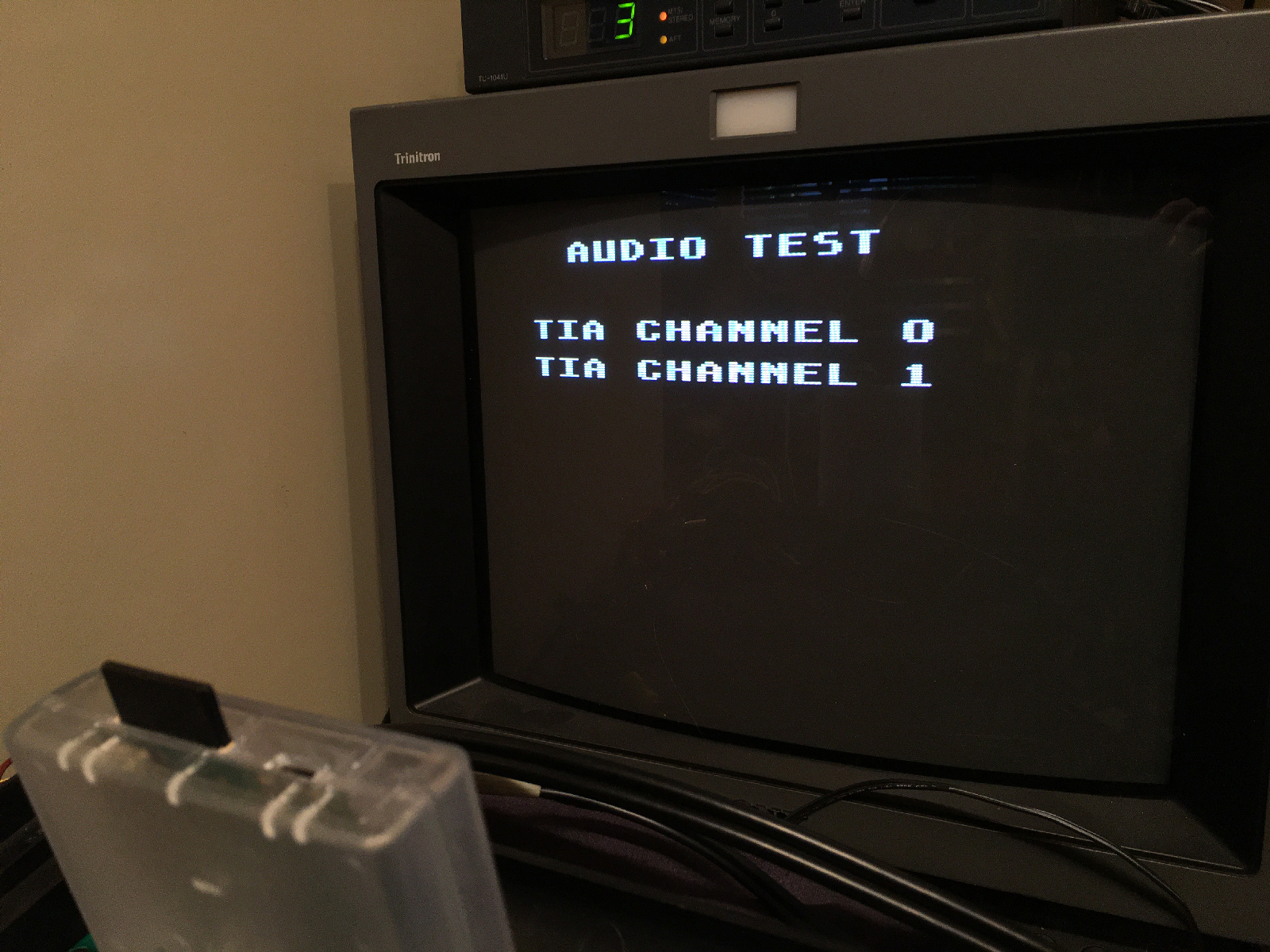
There should be trace joining TIA pins 12 and 13 (there's one on my 7800). But it's not there. There's no continuity. I'm guessing the previous modder cut that trace so the TIA would be "stereo"?? I guess?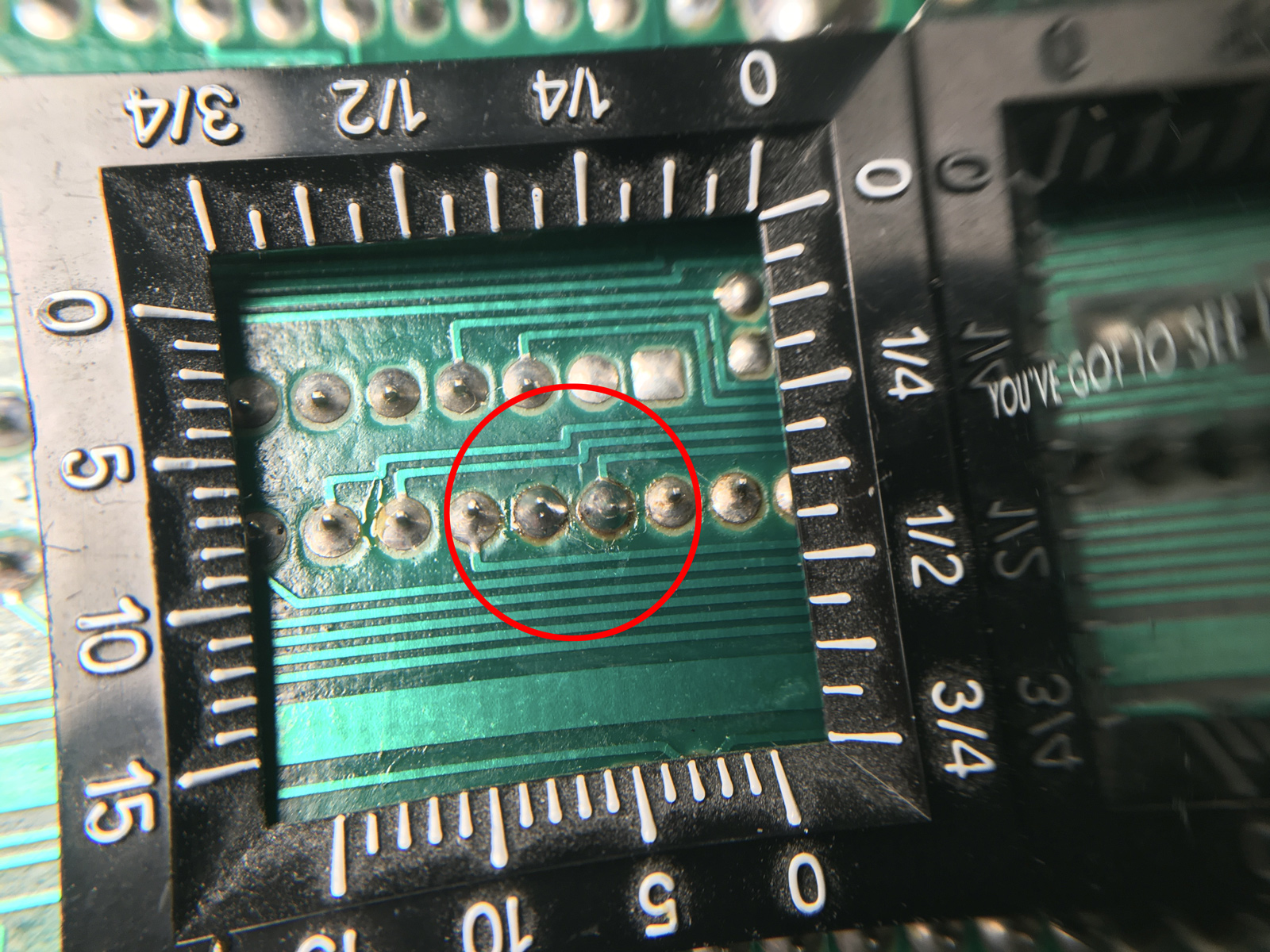
Anyway, I bridged the two pins...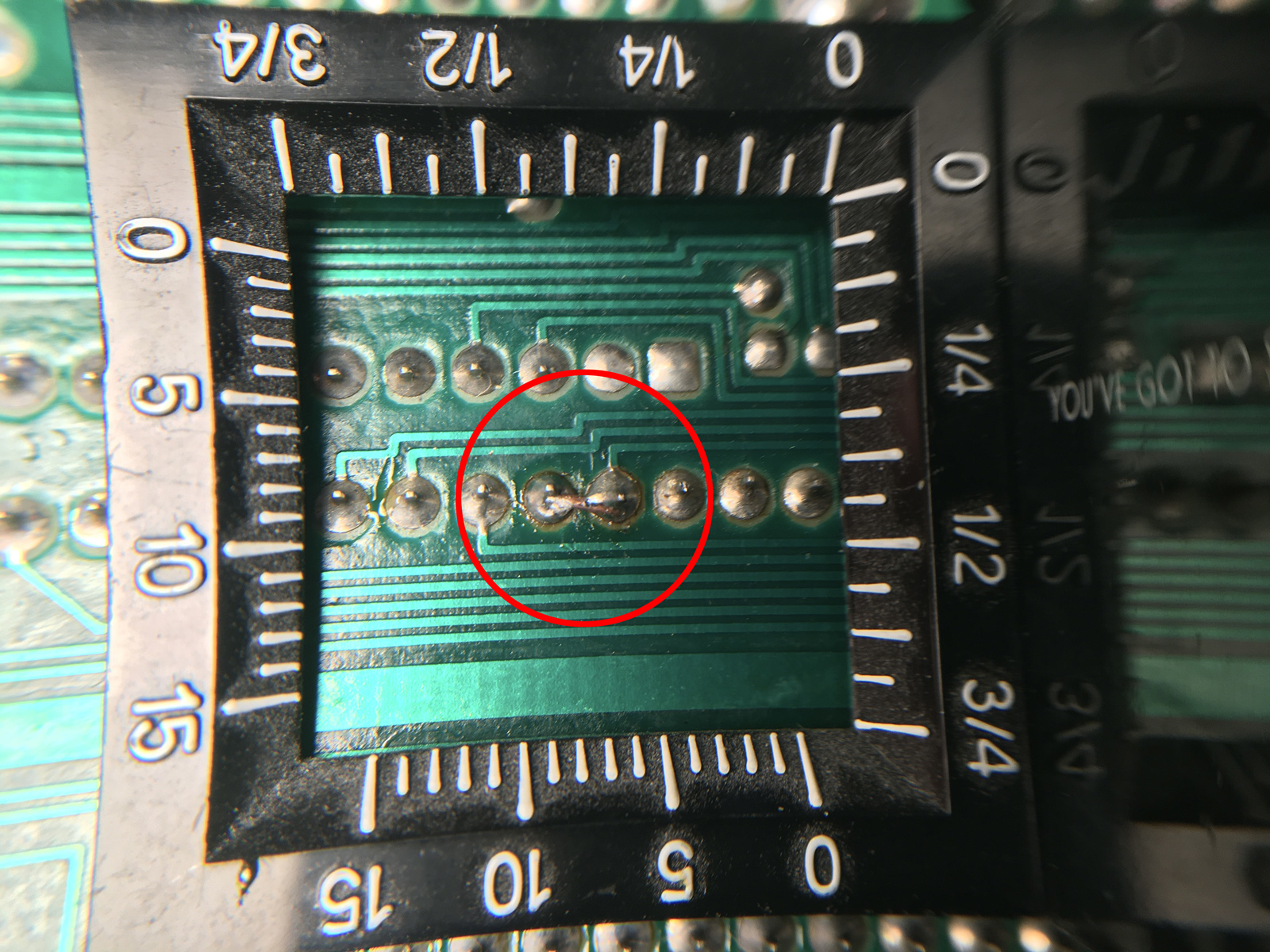
A little further-away look at it: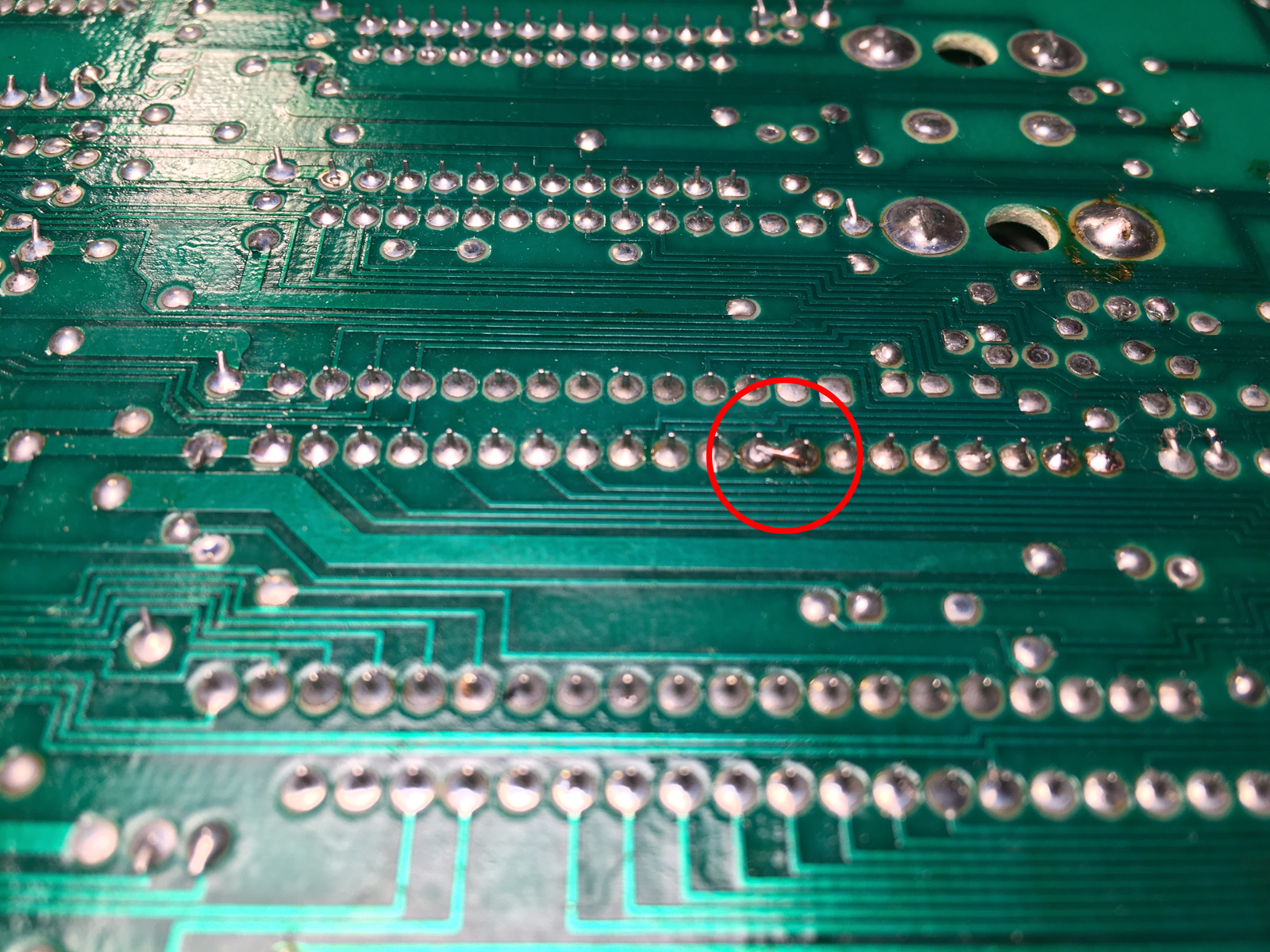
And while I had the soldering iron out, I also re-anchored the power jack. It wasn't sitting flush to the circuit board, and I was concerned about there being too much force exerted on the connection. The plastic tabs which are supposed to hold this in place are loose or missing. Not sure what do do about that... maybe a little epoxy?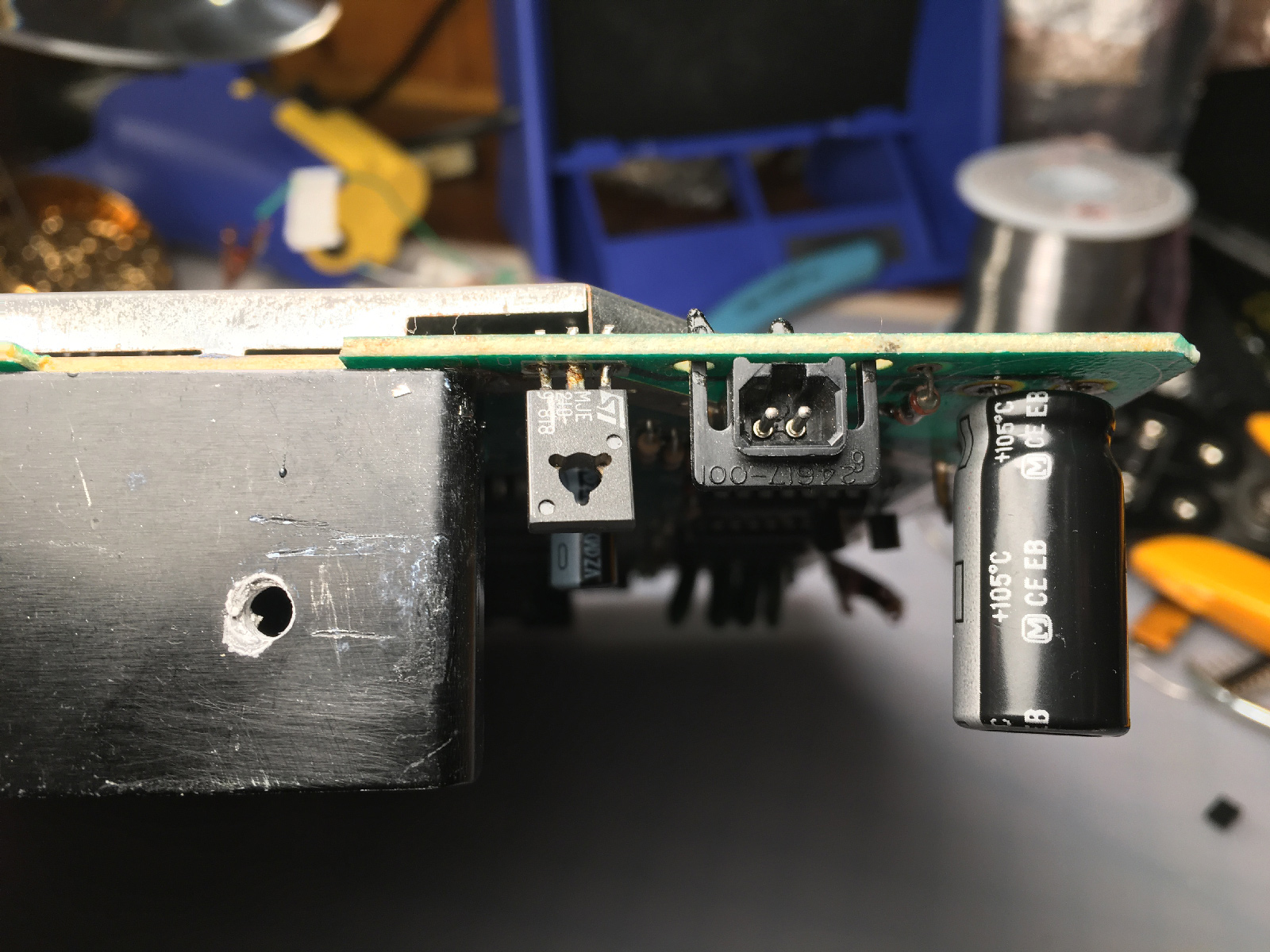
Anyway, back to testing. And this time - full TIA audio! And video!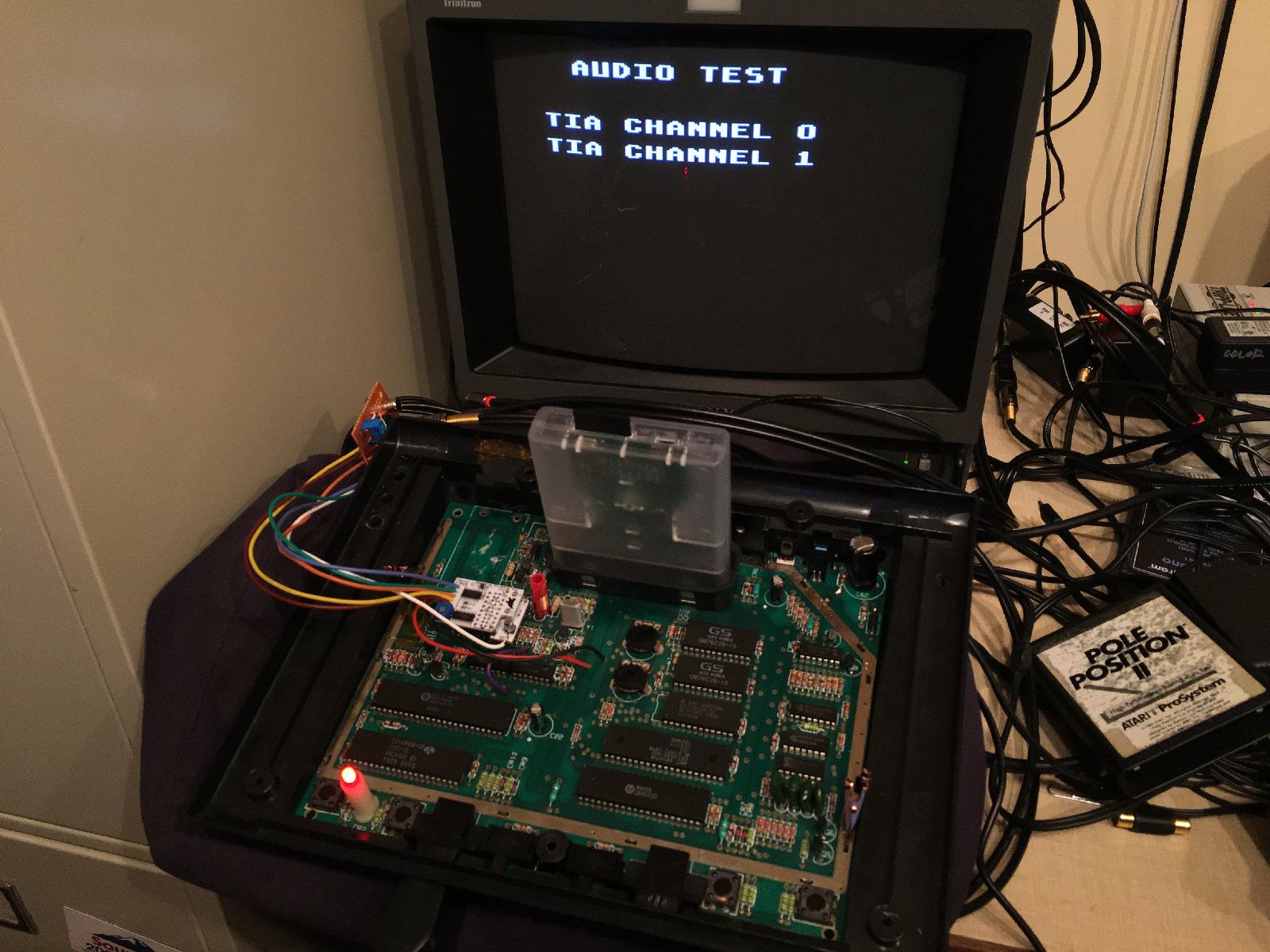
And POKEY audio as well!
After the console warmed up, the colors changed slightly (to be expected):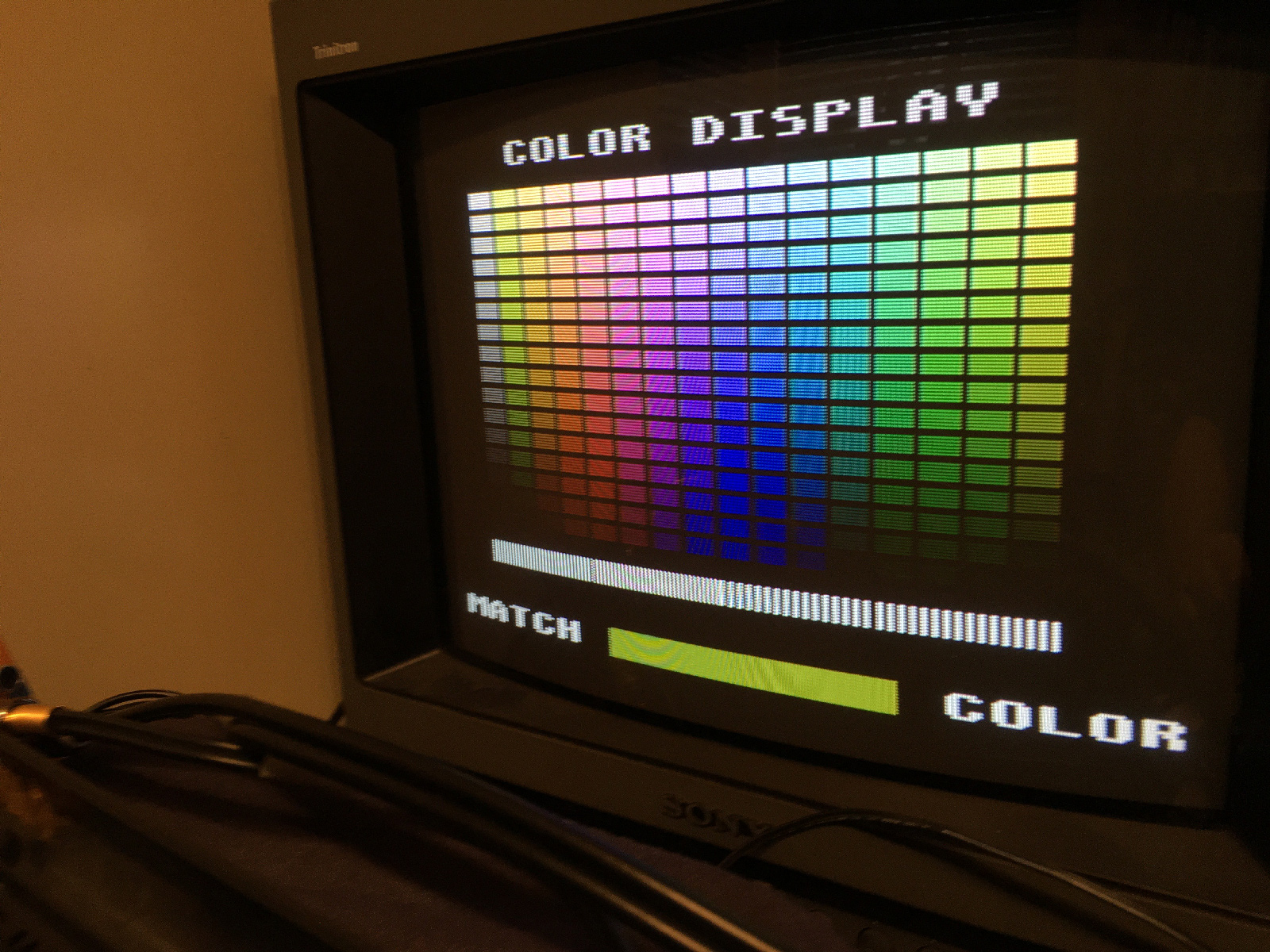
The right side of the bar is now warmer than the left side. Previously, the left side was warmer.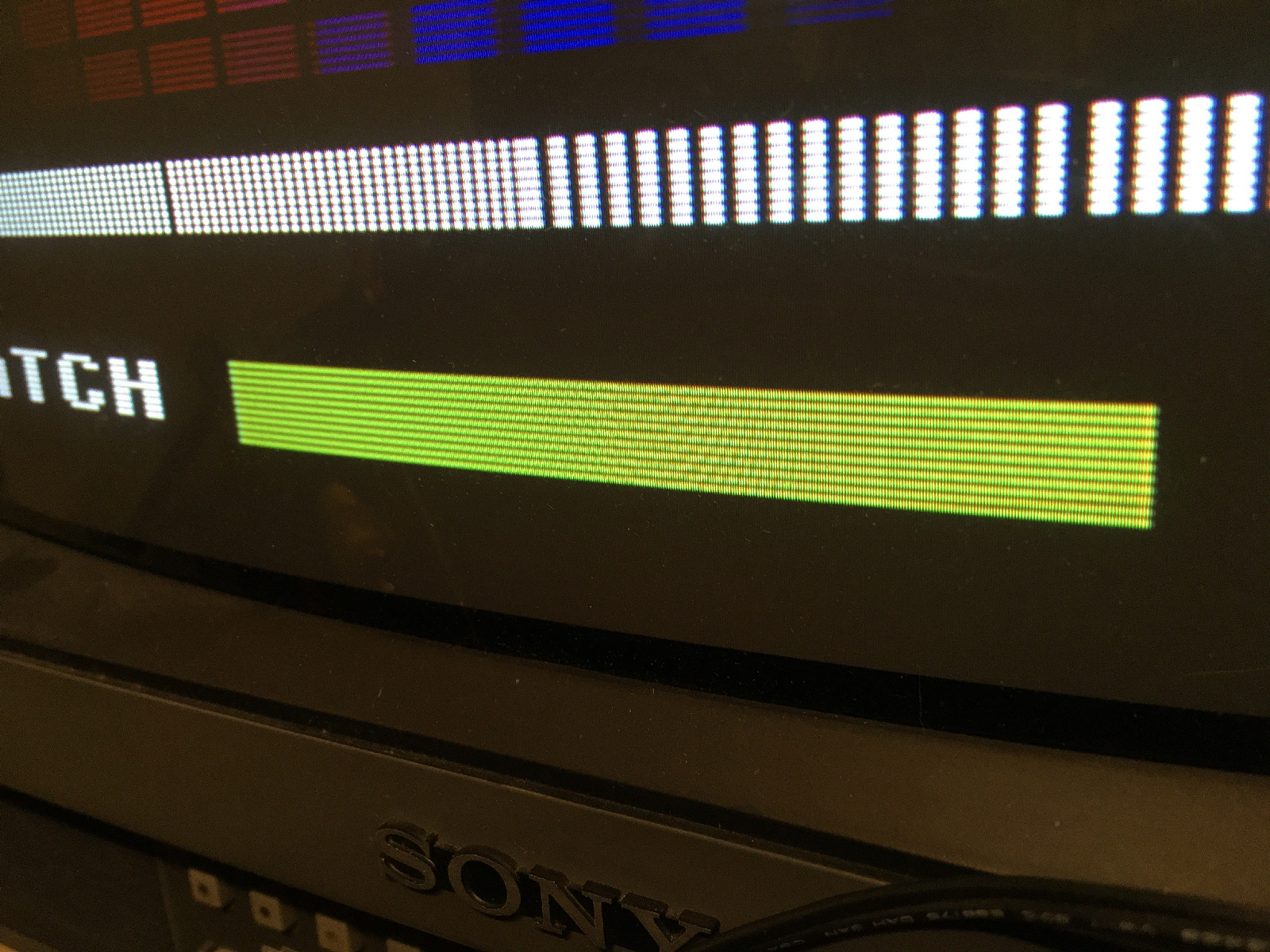
So we're almost there! Now, I just need to fire up Tower Toppler, and adjust the... well... crap.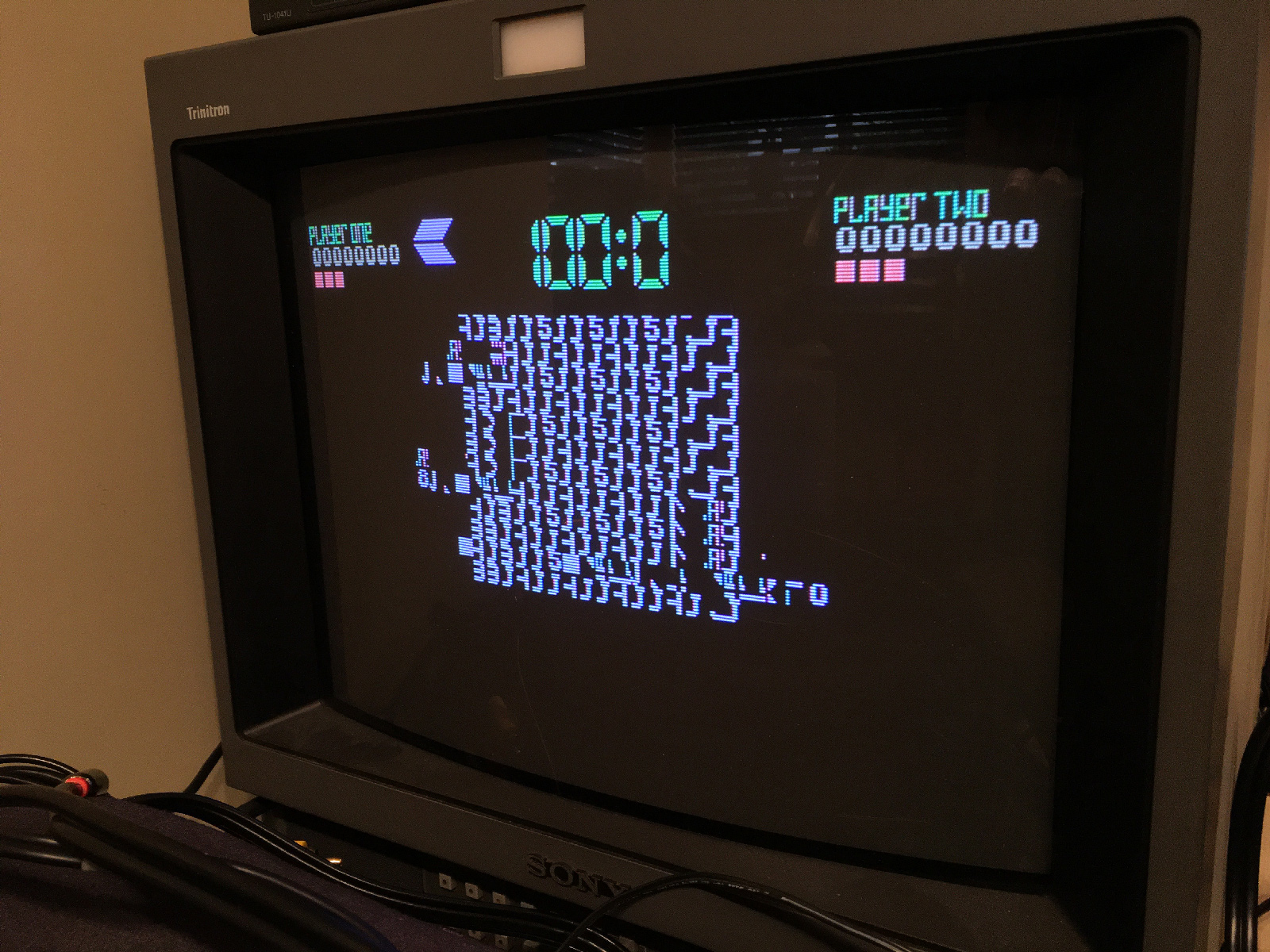
Eh... who plays Tower Toppler anyway? ![]() Guess I should report this in the Concerto Firmware thread.
Guess I should report this in the Concerto Firmware thread.
Up next: Final wiring and patching up the case. Then we'll get around to what those switches are for. ![]()
Published 1/16/23, 5:44PM
-
 2
2



6 Comments
Recommended Comments